Email marketing is an integral part of any business, whether you are a small one-person operation or a multi-national corporation with thousands of employees.
While social media has become a very effective way to reach customers, email is still the most direct and effective way of connecting with your leads, nurturing them, and turning them into customers.
No matter how much technology advances, email is still the number one most fluid way to communicate professionally.
But you know that, right? That’s why you’re already reading my guide.
I want to make this fun – not dry as a bone like some of the email marketing platform guides out there. So this is a fun (but still accurate) look at your options for email marketing software.
I use email marketing in my business on a daily basis. It’s become a mainstay of my content strategy and how I’ve grown this site into what it is today. Let’s take a look!
Best email marketing software
What Is email marketing software?
Email marketing is one of the most powerful tools you can use to grow your business. It’s also one of the most neglected channels for small businesses, despite being an extremely effective way to reach your customers and generate sales.
Email marketing is a cost-effective form of communication that can be used to communicate with customers at any time, without having to worry about reaching them at the wrong time or when they don’t have time to respond.
It allows you to build relationships with your clients, keep them in touch with new products and services and even send them reminders about appointments or events – all without needing their direct involvement.
Best Email Marketing Software – Introduction
When it comes to email marketing, there are many companies that offer this type of service. Some offer a more robust platform than others. Some are more cost-effective than others.
And some offer better customer service than others. It all depends on what your business needs from an email platform and what kind of budget you have for such services.
That’s why we’ve done the research for you and put together this comprehensive list of the Best Email Marketing Software on the market today.
What Is The Best Email Marketing Software?
Email marketing software enables the sending of bulk emails and tracks important metrics, such as open rates and click-through rates.
This makes it easier for marketers to see what’s working and what isn’t in real-time.
The most popular email marketing software solutions are:
- Constant Contact,
- ActiveCampaign,
- ConvertKit,
- GetResponse,
- Moosend, and
- Mailchimp.
This guide covers the best email marketing software on the market today. In addition to helping you find the right software, we’ll walk you through how to evaluate your options and choose one that best suits your needs.
1. Activecampaign
ActiveCampaign is an integrated email marketing, marketing automation, and sales CRM platform for small and medium-sized businesses. The platform combines all the essential features of a CRM system with the power of email marketing, automation, third-party integrations, and more.
It enables companies to create personalized and targeted marketing content for their ideal customers. The system’s features include tools for email marketing and automation, landing pages, website tracking, list segmentation, and list growth tools, CRM, and Sales Automation.
It also comes with a large variety of integrations including payment gateways such as
- PayPal,
- e-commerce platforms like Shopify or WooCommerce,
- analytics tools like Google Analytics,
- productivity apps such as Zapier or Calendly, and
- social media platforms like Twitter or Facebook.
ActiveCampaign comes with a drag’n’drop builder to help businesses create attractive emails. Its autoresponder series function automatically gets triggered once someone signs up or makes a purchase.
This feature allows you to send follow-up messages based on customer behavior. The software also offers A/B testing to optimize your campaigns’ performance.
ActiveCampaign enables users to increase company revenue with its lead scoring feature which rates prospects based on demographic information and their engagement level with the business.
Activecampaign Features
The platform provides a number of features, including:
- Email segmentation, list management, and newsletter automation
- Integrations with Shopify, BigCommerce, WordPress, and other popular platforms
- Contact profile management, targeting, and conversion tracking tools
- A/B testing tools to optimize campaigns
- ActiveCampaign combines the power of email marketing, automation, with sales and CRM.
- It is an all-in-one platform for managing your contacts, marketing, sales, and support teams.
- It can help you to craft beautiful emails that deliver your message to the right person at the right time.
- You can use ActiveCampaign to track all your contacts from prospects to customers and beyond.
ActiveCampaign
The platform gives businesses of all sizes access to 500+ pre-built automations that combine email marketing, marketing automation and CRM for powerful segmentation and personalization across social, email, messaging, chat and text.
Activecampaign Pricing
Activecampaign Pros
1. Automation tools are simple to use and powerful.
2. Automation rules cover most user needs.
3. All plans include email marketing and automation.
4. Reporting on email deliverability is detailed and robust.
If that’s not enough, here are just a few of the reasons we think it’s amazing:
- It helps us track the sales funnel so we can see when our customers drop off and fix that. It helps us retain our customers by making sure we’re sending them relevant information.
- It helps us segment our users so we can make sure each user gets emails they care about. The team at ActiveCampaign is always there to help us when we have questions, and they’ve been great in helping us build a relationship with our customers based on trust.
2. Constant Contact
Constant Contact is a popular email marketing tool for small business owners. It’s easy to use and offers a number of features that make it an excellent option for beginners.
Constant Contact offers a 60-day free trial and monthly pricing plans for up to 500 contacts, which makes it a good option for companies just starting out. The software is easy to learn and the customer support team is available 24/7 via phone or live chat.
With Constant Contact, you can easily send personalized emails with photos and videos. The company also offers tools that make it easy to add social media buttons to your emails and integrate them with Facebook, Twitter and LinkedIn.
The company also offers templates that help you create eye-catching emails, as well as mobile apps so you can use its tools on the go. Constant Contact also lets you set up automated messages so you can reach customers on their birthdays or at other times.
Consistent Contact’s reporting tools let you see how many people opened your email campaign and how many clicked on the links in it. It also integrates with Google Analytics so you can track visitor data from your email campaigns alongside other analytics data.
Our intuitive tools and expert resources help you build and maintain relationships with your customers. In fact, their customers reportedly see an average ROI of $43 in new sales for every $1 they spend on email marketing.
Constant Contact Features
1. Easy-to-use tools make it simple to create professional email campaigns that wil engage your customers and grow your business.
2. Design emails that have impact. Their beautifully designed templates are fully customizable and mobile responsive. Plus, they offer over 700 free high-resolution images that can be used in any email, anywhere.
3. Send the right message at the right time.
4. Personalize content based on customer behavior, interests and purchases with our suite of targeting tools.
5. Schedule emails to send when your recipients are most likely to check their inboxes.
Constant Contact Pricing
Constant Contact Pros
- You can set up an account for free and see if it works for you.
- You can customize your emails, webpages, and ads with easy-to-use templates.
- It’s mobile-friendly, so you can send emails from your phone.
- They offer a 60 day money-back guarantee.
- You get access to their 24/7 customer support team.
Constant Contact
Constant Contact is a cloud-based suite of email marketing tools that help business owners and digital marketing professionals manage email lists.
The service makes it possible for almost anyone to start collecting leads and nurturing them via email until they become prospects and customers.
3. Convertkit
ConvertKit is an email marketing and automation tool targeted mainly at bloggers. It has a user-friendly interface and its free migration service was very quick and simple to use.
I also like how you can send out segmented emails using tags and various other criteria, which will help you create more targeted email campaigns. ConvertKit is an email service provider that’s designed specifically for bloggers.
It’s a great option if you want to send out email newsletters and build an audience of subscribers. However, there are a few things that could be improved.
One is the lack of multiple templates for when you want to design your email campaigns.
You can only choose between one template and the default text editor on ConvertKit, which isn’t ideal as it takes more effort to make your emails look attractive. Another feature that would be helpful is being able to create custom signup forms rather than relying on just one generic form.
Although it’s simple to add a form in ConvertKit, it would be better if you could customize the signup form so that visitors know what they’re signing up for (such as subscribing to a newsletter or getting an online course) or so that you can collect more information about them (such as their interests).
Overall, ConvertKit is a good email marketing tool for bloggers or anyone who wants to build an email list with ease. It’s great for sending newsletters and gives you useful analytics on your email campaigns.
Convertkit Features
With ConvertKit, you can:
- Send unlimited emails to your subscribers.
- Create unlimited landing pages and opt-in forms.
- Automatically tag subscribers based on actions they take.
- Build dynamic segments based on tags and send highly targeted broadcasts.
- Manage an unlimited number of subscribers.
Convertkit Pricing
Convertkit Pros
– Easy to use.
– Reliable and fast customer support.
– Completely visual content upgrades and opt-in forms.
– Free migration service to import subscribers from any other email provider.
– You can set up multiple opt-in forms in minutes with ConvertKit’s form builder.
– Integration with many popular third party apps and services, including Zapier, WordPress, Leadpages, and more.
Features like automation and tagging make ConvertKit a good choice for bloggers who want to create more advanced campaigns (as opposed to just sending out newsletters).
ConvertKit
ConvertKit is a full-featured email service provider (ESP). Thanks to its ease of use, automation and other features, it’s one of the fastest-growing email marketing companies around.
4. Getresponse
GetResponse offers a wide range of features in their plans, so it’s easy to find one that matches your needs. In addition, they also offer a custom plan, which can be made as per your requirements.
The ‘AutoResponder’ feature is one of the best tools for maintaining a constant communication with your clients. You can create an unlimited number of autoresponders and send them to your clients after a specified period of time or on specific dates.
I like how easy it is to design emails with this software. I simply chose one of their templates, and replaced the images and text with my own content.
And when the emails were getting too repetitious, I switched to HTML code view and made small changes. So many editors are complex and make it difficult to edit HTML code in them.
But with GetResponse, things are much easier.
Getresponse Features
One of the best parts about GetResponse is that it has great customer support. You can reach a GetResponse representative 24 hours a day, 7 days a week.
The company offers live chat support and phone support in addition to an extensive knowledge base for self-help.
Another great thing about GetResponse is the extremely low price point for email marketing services. If you have a small list of subscribers, you can get started with email marketing for just $15 per month.
It’s not uncommon to see autoresponders that charge three times as much as what GetResponse charges at that price level.
- Extremely affordable plan at just $15/month.
- Excellent customer support.
- Easy-to-use interface makes it simple to create emails and track progress.
Getresponse Pricing
Getresponse Pros
1. Easy to Use. The software is very easy to use, and even a beginner can get used to it in no time.
2. Cheap. GetResponse offers a good price/quality ratio. With this software, you will get a lot of features at a very reasonable price.
3. Great Customer Support. GetResponse has an excellent customer support that is available 24/7 via email, live chat, phone or webform.
4. Email Marketing Automation. This feature allows you to automatically respond to your customers’ replies and send messages on their birthdays or anniversaries.
5. Large Image Library and Design Services Marketplace. GetResponse provides its users with thousands of templates and images that can be used for creating your own newsletters.
It also has a marketplace where its users can buy design services from professionals at an affordable price (for example, you can find here templates, banners or infographics).
GetResponse
GetResponse email marketing software summary. GetResponse is a powerful email marketing tool with smart automation features.
5. Sendinblue
Sendinblue is an originally French-based email marketing service (now based in Seattle, USA) that offers a full range of both traditional and innovative features.
The software’s user-friendliness and robust feature set make it a great fit for both small businesses just getting started with email marketing and those wanting to upgrade their current email marketing solution.
Sendinblue’s customer experience management (CXM) platform combines Email Marketing with SMS messages, CRM, and more. A key benefit of Sendinblue is its ease of use.
The company’s customer support team is available 24/7, so you can reach out for assistance at any time. Sendinblue’s simplified interface, which includes drag-and-drop functionality, helps you build emails quickly for all devices.
Sendinblue’s pricing structure is also transparent and easy to understand, making it an effective option for those with budget constraints.
Sendinblue Features
Sendinblue is a comprehensive email marketing software platform designed for small and mid-sized businesses. With its all-in-one marketing solution, companies can manage their contacts, marketing campaigns, transactional emails, and SMS messages from one dashboard.
Key features include:
- Email builder: Drag-and-drop editor, premade templates, and more. Landing page builder: Mobile responsive landing pages in minutes.
- Workflow builder: Drag-and-drop interface allows you to create automated workflows and send emails based on user behavior.Automation tools: Automatically trigger emails and text messages based on subscriber activity.
Sendinblue Pricing
Sendinblue Pros
1. Not a bad price for what you’re getting, which is a lot.
2. The SMS product looks good, with decent prices and easy integration.
3. The workflows are some of the best I’ve seen in an ESP.
4. They have a nice user interface that’s very easy to use, and it’s nicely responsive too (which means it works well on mobile devices).
5. They offer dedicated IPs, which is great if you plan to send high volumes of email.
Sendinblue
Sendinblue is the only all-in-one digital marketing platform empowering B2B and B2C businesses, ecommerce sellers and agencies to build customer relationships through end to end digital marketing campaigns, transactional messaging, and marketing automation.
6. Aweber
AWeber was the first email marketing software I ever used. This was many moons ago, but I got my first 5,000 email subscribers using AWeber and its feature-set.
AWeber is a great email marketing platform for beginners looking to build their brand and grow an audience. The tool is easy to use, has a clean interface, and provides a variety of automated email options that are ideal for small businesses.
It’s effective at growing your list, with signup forms that can be added to your website, social media channels, and more.
You can automate emails based on subscriber activity, giving customers the information they need exactly when they need it, while also providing helpful reminders that keep your brand top of mind.
While AWeber is one of the best email marketing tools for small businesses, it’s not perfect. For example, users can’t send transactional emails and there are no advanced analytics or segmentation features.
AWeber has been around since 1998 and has over 100,000 customers in more than 150 countries around the world. That’s some history and integrity, right there!
Aweber Features
Automate your follow-up emails so you don’t have to worry about sending them manually. Build relationships with your subscribers by sending personalized welcome messages.
Increase sales by offering discounts in your thank you messages. Send newsletters and updates to your list of subscribers automatically.
View real-time reports on how many people are opening, clicking and sharing your emails. Easily sync email lists between AWeber and other popular platforms like Facebook Lead Ads, PayPal, Shopify, Zapier, Stripe, WooCommerce, and more!
Aweber Pricing
Aweber Pros
From day one, Aweber have been focused on helping you build your business and do more of what you love.
They make sure their key features are designed with your needs in mind.
Here’s a quick look at some of the things you can expect from your AWeber account:
- You’ll be able to add contacts to your list directly from your site.
- You’ll have access to tons of free, customizable email templates.
- You’ll be able to schedule and send broadcasts, autoresponders, and more in one place.
- You’ll easily be able to create forms that match your brand and style.
- You’ll have access to 24/7 live chat support.
AWeber
AWeber provides online marketing services for small businesses. They provide marketing solutions to help you grow your email list and increase web traffic.
7. Moosend
Moosend is an ideal email marketing software for small business owners. It has a drag and drop editor that allows you to quickly create emails with little or no coding knowledge.
This is possible because its templates are pre-formatted and ready for use. It also provides several features that allow you to personalize content, display relevant products, and even integrate with a variety of other systems.
Moosend is a great email marketing software for beginners who are looking to send out attractive emails without paying a high price tag. I have been using Moosend for last couple of years and it just keeps getting better.
With the new interface, I find that emails are easier to design, campaigns set up and reports are much more detailed. My account manager is attentive and answers any questions I have in a timely manner.
Moosend Pricing
Moosend
Moosend’s powerful Email Marketing Features will help you grow your business. Create beautiful newsletters, automate them and monitor their performance.
8. Hubspot
Hubspot is a kind of all-in-one platform for all your digital marketing needs. It’s also a great tool standalone tool for managing your email marketing campaigns.
HubSpot’s email marketing service offers a variety of features that make it easy to send high-quality emails that are targeted to specific customers and segments.
It is an excellent tool for managing customer data, building customer profiles, and creating targeted campaigns. HubSpot’s email marketing tools provide the ability to create professional emails with an array of customizable templates, as well as custom HTML emails.
HubSpot provides an excellent set of tools for managing your email marketing campaigns. The software makes it easy to build personalized, targeted emails that will help you reach your target audience and increase sales.
Hubspot Features
Collaborate
Add your colleagues to emails and make sure everyone is on the same page with your customers.
Your team can see who’s replied and when, and leave comments on any message so you can stay connected throughout the email thread.
Track & Report
With HubSpot’s email marketing software, you’ll never miss an opportunity to engage with your contacts.
See how many people opened your campaign, which links they clicked, how many times they’ve opened it in total, and more.
Workflows & Automation
Use workflows to send personalized messages based on contact behavior and data. Use automation to nurture leads based on their actions and watch as your email engagement improves over time.
Hubspot Pricing
Hubspot Pros
- You can set it up as you’d like.
- It’s super customizable.
- It’s flexible when your needs change.
- It scales with your business.
HubSpot CRM
HubSpot is a ‘business growth management platform’, or more straightforwardly, a Customer/Contact Relationship Management tool (CRM) that not only manages your contacts, but also your sales, pipeline, digital marketing and lead nurture too.
9. Pabbly Email Marketing
Pabbly Email Marketing is a great online email marketing tool that assists you in sending emails to subscribers, managing lists and tracking email performance.
It is a reliable and intuitive platform for creating attractive newsletters, transactional emails and autoresponders.
Rather than going with the traditional way of collecting contacts and sending emails through an email service, Pabbly Email Marketing is an all-in-one tool that enables you to send unlimited emails through different channels.
It is an affordable solution for small businesses as it provides various features to send bulk emails without spending much money or time.
Pabbly Email Marketing also comes with a feature called “Pabbly Subscription Billing” that allows you to accept recurring payments from users. This helps in generating a passive income by selling your products on monthly or yearly basis.
As an email marketing tool, Pabbly Email Marketing keeps things simple by letting you access its features through a single dashboard.
In the email editor, you can choose from a number of pre-designed templates or start with a blank canvas, and then customize your design using the drag-and-drop editor.
This includes adding videos, images and text to your newsletters and emails.
Pabbly Email Marketing Features
Some of the key features include:
- Drag-and-Drop Email Builder. Email & SMTP Autoresponder.
- Cloud-based Solution. Unlimited Contacts & Emails.
- Email Tracking & Analytics. Marketing Automation Suite.
Pabbly Email Marketing Pricing
Pabbly Email Marketing Pros
- Unlimited subscribers.
- No Contracts.
- An easy-to-use email builder with no HTML required.
- Deliverability rates up to 98%
- 24/7 support.
Pabbly Email Marketing
Pabbly Email Marketing is affordable & easy email marketing platform. Empowering email marketers to engage with customers in the best possible way.
10. Mailerlite
Mailerlite is a great option for those of you who are just starting to build an email list (i.e. under 1,000 subscribers). Their pricing plans are affordable and comes loaded with tons of great features like landing pages and pop-ups.
If you’re just starting out with email marketing, Mailerlite is a great option thanks to their free plan that lets you send up to 12,000 emails per month to 1,000 subscribers.
Mailerlite’s free plan alone makes them the best free email marketing software on the market – especially if you are just getting started building your list.
Mailerlite’s paid plans start at $10/month for up to 1,000 subscribers, making them one of the most affordable providers out there.
Their top-tier plan allows unlimited emails to unlimited subscribers and costs just $50/month – a steal considering what they offer!
All these features make Mailerlite one of the best email marketing platforms out there – especially considering their affordable pricing plans!
Mailerlite Features
– MailerLite has over 150 responsive email templates, which all function beautifully across mobile devices.
– The drag-and-drop builder makes it easy to add or remove features, or to rearrange content within an email.
– A/B testing is available for emails sent to more than 200 subscribers, so you can be sure your email is optimized for the best possible results.
– You can segment your subscribers into groups and create personalized content for them.
– You can analyze the results of each campaign you send with detailed statistics, and see how well your emails are performing.
Mailerlite Pricing
Mailerlite Pros
Here are just a few of the many reasons we recommend Mailerlite:
-It’s free to start, so you can try it out and see whether it’s right for you before you commit.
-You can create a beautiful campaign in just minutes.
-It has automation ability, making it easy to set up campaigns that send when triggered by your readers’ actions or by the date or time.
-There are 1,000+ integrations, making it easy to connect with all your other favorite tools and platforms so everything can work together seamlessly.
Mailerlite
MailerLite is an email service provider that makes it easier to plan email marketing campaigns for any growing business.
11. Omnisend
Omnisend was built to make it easy for ecommerce marketers to send highly personalized emails and automated email series.
With a drag-and-drop email builder, pre-built templates, and built-in A/B testing, Omnisend is ideal for both novice and expert marketers alike.
Omnisend is an all-in-one marketing automation platform that integrates with many ecommerce platforms (like Shopify and BigCommerce), including the two major email services — HubSpot and Mailchimp.
The goal of Omnisend is to help ecommerce businesses automate their marketing efforts by collecting information about shoppers’ past purchases, browsing history, etc.,
and then deploying dynamic content based on behavioral triggers. At its core, Omnisend is designed to help you send more effective emails.
The software tracks your customers’ behavior so you can segment your list into meaningful groups (e.g., loyalty program members, cart abandoners) and then design customized campaigns for each segment.
Omnisend Features
– Schedule your emails for up to a year in advance.
– Take advantage of pre-built templates.
– Set up your own automated workflows.
– Easily customize each email to suit your needs.
– Personalize your messages with dynamic content and merge fields.
– Use the Omnisend editor to create custom email designs for mobile, desktop, and tablet devices.
Omnisend Pricing
Omnisend Pros
– Interact with your customers, no matter what device they use.
– Stay in touch with your customers through text promotions and personal reminders.
– Create beautiful, eye-catching emails without needing to be a designer.
– Make the most of customer data through intelligent segmentation.
– Send timely and relevant emails that will convert your customers.
Omnisend
Omnisend is an omnichannel marketing automation platform for growth-focused ecommerce businesses. Omnisend allows you to add several channels to the same automation workflow for seamless communication via email, SMS, web push notifications, and more.
12. Sendpulse
SendPulse is an email marketing service that puts a focus on automation. It offers many of the same features as competitors like MailChimp and Constant Contact.
But it also has built-in tools to help users create personalized content, manage social media accounts, and send push notifications.
SendPulse offers basic marketing automation tools at a very affordable price point. SendPulse is a multi-channel marketing platform that goes beyond email marketing to include push notifications, SMS messaging, and web push notifications.
The service offers a dynamic user interface, a drag-and-drop editor, and a wide range of templates across all services. SendPulse is easy to use and offers an attractive, modern interface.
While it doesn’t offer all the features we look for in an email marketing tool, SendPulse provides everything most users will need to create successful campaigns in an easy-to-use package.
Sendpulse Features
– SendPulse helps you build a better email marketing strategy by making it easy to stay organized and track the results.
– You can create your own templates, or use one of their pre-made ones, and then personalize those messages with your recipient’s name, location, or other bits of info from your database.
– Bulk send emails to different segments of your list so that you can get more clicks and conversions by sending people what they want to see.
– Use automation to set up a sequence of emails that are sent out as soon as someone is added to your list.
This way, you don’t have to worry about manually adding people to the right sequence or forgetting to send out an email at all.
Sendpulse Pricing
Sendpulse Pros
Here’s why you should choose SendPulse:
- Unlimited emails, SMS messages, and web push notifications.
- Advanced analytics and A/B testing.
- 150+ email templates or create your own.
- Automate your workflow with segmentation.
- Free analytics for your website visitors’ behavior.
SendPulse
With SendPulse you can send email campaigns and chatbot messages, create landing pages and manage contacts in a free CRM.
13. Campaign Monitor
Campaign Monitor is an email marketing platform that allows you to customize your email campaign with an intuitive drag-and-drop interface.
Campaign Monitor is a solid choice for small businesses that need an effective email marketing platform but don’t want to get bogged down in the details.
It is one of the better solutions for beginner users and features an intuitive drag-and-drop interface.
It also supports integrations with a variety of other programs, including Salesforce, Shopify, and WordPress, making it easy to fit into most workflows.
Campaign Monitor Features
– Email templates optimized for mobile.
– Real-time campaign previews.
– Highly customizable Inbox Previews.
– Automated A/B testing.
– Unsubscribe management.
– Image hosting.
Campaign Monitor Pricing
Campaign Monitor Pros
-You can use Campaign Monitor to build email lists, send out campaigns, track your stats, and A/B test your campaigns.
-You can view comprehensive stats on subscribers, including demographics and browsing history.
-If you use Facebook Ads and Google Adwords, you can sync up your marketing efforts with Campaign Monitor’s integrations for these platforms.
Campaign Monitor
Campaign Monitor is a cloud-based email marketing solution that helps businesses manage new subscriptions, send email newsletters and generate reports.
14. Mailchimp
If you run a relatively small business, Mailchimp is the ideal email marketing solution. The pricing is affordable and there’s a generous free plan available.
It’s easy to use, especially for beginners. It offers a large number of customizable templates, so you don’t need to know how to code in order to create professional looking emails.
The online support is comprehensive and comes in several forms such as tutorials, guides, webinars and more. If you’re serious about email marketing, then it’s probably best to look elsewhere.
Mailchimp Features
- Email marketing that makes your audience love you.
- Marketing automation to take the reins from you.
- Segmenting for laser-focused targeting.
- Mobile app for on-the-go marketing.
- Integrations with your favorite tech.
- Audience insights to make smarter choices.
Mailchimp Pricing
Mailchimp Pros
– Mailchimp is one of the most popular email marketing services in the world.
– Mailchimp helps you grow your business by connecting you to people who are interested in your brand.
– Mailchimp can help you build a better website, manage social media campaigns, and send out newsletters.
Mailchimp
The application allows users to share newsletters on various social networks and track customer engagements. The application provides tools to create targeted emails, run Facebook ad campaigns, automate follow-ups and monitor campaign progress, among others.
15. Gist
Gist is a marketing automation tool that helps you connect with your customers across multiple channels.
By collecting data from all the channels your customers use to connect with you, Gist gives you the power to make informed decisions about how to engage with them.
Gist allows you to send bulk emails and build email campaigns for lead generation and customer retention.
You can also use the tool’s insights dashboard to analyze site traffic and engagement metrics for building personalized experiences for each contact.
Gist
Gist is a cloud-based help desk platform that helps small to large enterprises manage customer queries and streamline communication with leads. It enables users to embed chat widgets into business websites and customize greeting messages.
16. Automizy
Automizy is an email marketing app with a drag-and-drop editor, email automation, and detailed analytics.
Its pricing starts at $9 per month for up to 500 subscribers, and it can integrate with over 100 other apps.
It’s a cloud-based service, so you don’t have to download anything and can access it from anywhere.
Automizy has free email templates, A/B testing and automated emails and campaigns.
It also has easy to use drag-and-drop email editor that allows you to create beautiful emails without any coding knowledge.
Automizy Features
Drag-and-Drop Editor
Create responsive emails using a WYSIWYG editor. You can choose from an array of templates or design your own from scratch.
The drag-and-drop interface allows you to add columns, buttons, images and text in just a few clicks.
Automation
Automate your email marketing based on user behavior, such as when someone clicks on a link or opens an email.
Automizy has prebuilt workflows called “recipes.” You can also create your own workflows from scratch.
Landing Pages
Create landing pages for collecting leads and selling products. You can choose from over 80 free templates or design your own from scratch.
Landing pages are responsive for mobile devices and can be integrated with apps like Google Analytics and Hotjar for detailed analytics.
Automizy
Automizy is an Email Marketing Automation software. We offer AI-powered Subject Line Tester, AB testing, Resend and Email Automation.
17. Keap (formerly Infusionsoft)
Keap is an email marketing solution for small businesses, created by the makers of Infusionsoft, that helps you create and manage customer relationships through email marketing.
Keap offers an easy-to-use drag-and-drop interface that allows SMBs to create beautiful emails, make automated campaigns, monitor performance, and use integrations.
The company’s software has been around for nearly 20 years and is one of the most mature options in the market.
It’s evolved over time to be a much stronger product for small businesses and entrepreneurs than it used to be.
But it’s still not for everyone. It’s one of the more comprehensive email marketing platforms on the market and is particularly popular with consultants who need robust CRM features but don’t want to pay enterprise prices.
Keap Pros
User friendly with a simple drag-and-drop interface. Allows users to easily customize every aspect of their email.
Also has several templates for users to choose from if they don’t want to start from scratch.
Offers a campaign builder option that enables users to easily create multiple campaigns at once through their easy-to-use step-by-step process. Cons:
However, while it is user-friendly overall, the drag and drop interface can be confusing at times and difficult to understand what it wants you to do when something is not done correctly.
Keap
An Easy Sales and Marketing Automation Software + CRM. Easily integrate tools to simplify payments, scheduling, landing pages, and so much more. Keap’s sales and marketing automations work with your business to grow sales and save time.
18. Benchmark
Benchmark Email is an email marketing company that provides a variety of products, including email marketing software and tools. Benchmark Email has over 500,000 users in approximately 150 countries.
The company also offers free customer support via telephone, chat, and email. However, the phone support is only available during business hours.
Benchmark Email provides a number of features that cater to businesses at various stages of growth.
Benchmark Pricing
Benchmark
In computing, a benchmark is the act of running a computer program, a set of programs, or other operations, in order to assess the relative performance of an object, normally by running a number of standard tests and trials against it.
19. Moonmail
MoonMail is an email marketing tool that lets you set up and send email newsletters, create opt-in forms, view statistics and manage subscribers.
MoonMail is a product offered by Amazon Web Services (AWS), allowing you to automate your emailing using the same infrastructure that hosts Amazon.com.
This means that MoonMail has the advantage of being extremely reliable and fast – something that an in-house email platform can’t offer.
Moonmail Features
MoonMail offers a number of advantages over other email marketing tools, including:
– It’s 100% free: no subscription fee, no credit card required, no hidden costs – just pay for what you use. It’s fully integrated with AWS, including Lambda functions.
– DynamoDB lets you create unlimited lists of subscribers with unlimited segments; It comes with ready-to-use templates and also allows you to import your own HTML.
– Moonmail’s API lets you integrate with other applications on AWS or any other platform; It supports multiple languages and uses Amazon SES as its backend server.
Moonmail Pricing
MoonMail
MoonMail is a cloud-based email marketing tool suitable for small to midsize companies in all industries, particularly marketing agencies, designers and developers. Key features include configurable email templates, email automation and reporting.
20. Ontraport
Ontraport is a good solution for companies that want to take their sales and marketing efforts to the next level.
It provides users with a platform that allows them to create, automate and track personalized marketing campaigns across multiple channels.
What makes Ontraport stand out from other marketing automation solutions is its built-in CRM capabilities. This is essential for companies that need to automate customer-related processes.
With this, you can easily track customer information such as lead status and engagement activities across multiple channels including websites, landing pages, emails and social media.
The software also comes with a set of powerful tools that enable you to build custom web forms, send email campaigns, design landing pages, create subscription sites and more — all in one platform.
This enables users to streamline their operations by eliminating the need to switch between various software tools just to execute different tasks.
Ontraport is best suited for small businesses that are looking for an all-in-one platform they can use to manage all aspects of their sales and marketing operations.
The software is also ideal for entrepreneurs who need a solution that can help them scale their business without having to hire additional staff or invest in expensive hardware or IT infrastructure.
Ontraport Pricing
Ontraport
Ontraport is a no-code business software that empowers service businesses to systemize and scale. Ontraport manages and automates the entire buying cycle, resulting in faster growth while freeing up business owners and teams to deliver more customer value.
21. Emailoctopus
EmailOctopus is yet another email marketing service provider. It offers a robust set of tools for creating and managing email campaigns.
It also provides a generous free plan that makes it an attractive option for businesses just starting out.
One of the best features of EmailOctopus is its ability to integrate with Amazon SES, which is a significantly cheaper way to send emails compared with other third-party services.
This means EmailOctopus can deliver the same level of performance at a much lower cost than many other providers, which is great news for those on tighter budgets.
The best thing about EmailOctopus is how easy it is to get started, how inexpensive it is and that you get access to all the features from day one.
It’s a top solution if you’re looking for an affordable email marketing service or you’re just starting out with email marketing.
EmailOctopus
EmailOctopus is an email marketing tool offering a rich set of email marketing templates allow users to create campaigns which are responsive to any device, in a matter of minutes. Users have the ability to build drip email sequences, import contacts, integrate with forms, and generate customized reports.
22. Engagebay
EngageBay is an all-in-one marketing, sales and service automation platform designed for small and medium businesses. The software provides a complete set of tools for handling leads, contacts, deals and more.
EngageBay offers a lead capture solution that can be embedded on websites to capture visitor information.
It also provides tools for email marketing, which include email templates, automatic follow-up emails, and a drag-and-drop editor.
The software includes a CRM that provides users with the ability to segment contacts into groups and build lists based on specific criteria.
Its sales features include customizable deal stages, a visual sales pipeline, reporting tools, and workflow automation.
EngageBay additionally offers customer support features such as ticketing management, live chat and knowledge base management. The software integrates with Gmail, Outlook and Zendesk.
Engagebay Features
1. Easy to use interface that requires no training.
2. Provides marketing automation to help you manage all your marketing campaigns from one place.
3. Provides easy to use email marketing tool with an unlimited number of emails & contacts.
4. Provides easy to use sales automation tool to help you manage all your sales leads from one place.
Engagebay Pricing
EngageBay
EngageBay is an integrated marketing, sales, support and CRM solution designed to help small to midsize enterprises acquire, engage and convert website visitors into customers.
23. Drip
Drip is an email marketing platform that allows you to easily create and monitor your email marketing campaigns. It has a wide range of features, including customizable email templates, robust reporting, customer segmentation, and automated emails.
Drip is designed for businesses of all sizes and budgets, with pricing plans that make sense for both small businesses and large enterprises.
Drip Features
Here are some of the tools you get with a paid plan:
1. Email automation. Automate common tasks like sending a welcome email when someone joins your list or following up with an abandoned cart notification.
You can even set up a schedule based on specific events like someone’s birthday or anniversary.
2. Customizable templates. Create beautiful emails using pre-made templates, or design your own using basic HTML knowledge.
You can also save different versions of each template so you can A/B test them to see which gets the best results.
3. Custom fields. Collect more information about your customers by adding custom fields to your signup forms and automation.
The data you collect can be used for segmentation and personalization later on.
Drip Pricing
24.sendx
SendX is a cloud-based email marketing platform that automates the creation of email campaigns. The solution is equipped with tools for creating custom landing pages and forms for capturing customer information.
It lets users set up autoresponders to send personalized emails based on triggers, such as abandoned cart, subscription renewals or specific products. SendX also allows users to segment contacts based on their demographics, behavior, location and more.
The solution’s analytics engine allows users to visualize the performance of their email campaigns and track ROI across multiple marketing channels.
The product integrates with a range of applications including Google Analytics, Slack, Salesforce, Google Contacts, and Facebook. SendX offers a free plan and paid plans starting at $9 per month.
Sendx Features
The SendX email marketing software offers many features, including:
- Email templates.
- Drag-and-drop editor
- Autoresponders
- List management tools
- Instant notifications when someone subscribes to your mailing list
- Analytics and reporting tools
- Integrations with other business software tools like Shopify, Google Analytics and Salesforce
SendX
SendX is an Intuitive, Affordable & Feature-rich Email Marketing Software for marketers & business owners. It enables users to send unlimited email campaigns, build email lists, design emails using a drag-and-drop editor, email automation and sequences.
Sendx Pricing
So What Is Email Marketing Exactly?
Email marketing is the act of sending a commercial message, typically to a group of people, using email.
In its broadest sense, every email sent to a potential or current customer could be considered email marketing.
It usually involves using email to send advertisements, request business, or solicit sales or donations, and is meant to build loyalty, trust, or brand awareness.
Marketing emails can be sent to a purchased lead list or a current customer database.
The term usually refers to sending email messages with the purpose of:
- enhancing a business’ relationship with current or previous customers,
- encouraging customer loyalty and repeat business,
- acquiring new customers or convincing current customers to purchase something immediately, and
- sometimes sharing third-party ads.
Email marketing is one aspect of internet marketing, which encompasses online marketing via websites, social media, blogs, etc.
It is essentially the same as direct mail except that instead of sending mail through the postal service, messages are sent electronically via email.
Email marketing has been around for decades, but it is still one of the most effective digital marketing channels available when it’s done well.
Email today needs to feel like one-on-one conversations with each audience member, but it also needs to scale.
There are essentially three factors that determine whether your email gets opened:
- Subject line,
- Sender,
- Timin..
We’re going to do more in-depth on those three aspects as this guide progresses.
How Do You Choose The Best Email Marketing Software?
Picking the right email marketing software can be a daunting task. There are dozens of services out there, each with its own features and price point.
Here’s how to find the right one for you:
Consider Your Needs
Figure out what you need before you start looking; otherwise, it’s easy to get distracted by shiny objects.
- What do you want to accomplish?
- What kinds of reports do you need?
- How much customization do you need in your templates?
- How many emails will you be sending each month?
The answers to these questions will help narrow your search.
Consider Your Budget
Email marketing software can range from free (MailChimp, for example) to thousands of dollars per month.
If money is a factor, set a budget before you start shopping so you don’t get your heart set on something you can’t afford.
Look For Integrations With Other Tools
Tools like Shopify and WordPress allow for one-click integrations with email marketing software, which makes it easier for merchants who already use those platforms or who want to avoid additional logins.
Of course, cost and features should also be considered when making a final decision.
The best email marketing software should have the following features:
- Email templates that are ready to use.Comprehensive list of email templates.
- A/B testing capabilities. Automated workflows and integrations with other systems.
- Integration with CRM and CMS.
How Does Email Marketing Software Work?
Email marketing software is a tool that companies or individuals use to run email marketing campaigns. These tools allow you to create and send emails while also tracking analytics and managing your subscriber lists.
They can either be used by email marketers to run their own campaigns or by companies to manage the campaigns of their employees.
1. Keep In Touch With Customers & Subscribers
Email marketing is a great way to keep in touch with customers and subscribers, build stronger relationships and generate more business.
Email marketing is an amazingly powerful tool if used correctly but it has become a bit of a dirty word due to endless spam mail that we all get to our inboxes on a daily basis.
But email marketing is a great communication tool, providing you use it well and only send messages that people want to receive.
Just think about it, if your business was just starting out again today and you had 10,000 customers or subscribers on your mailing list?
How long would it take you to build up that level of contact again? It would take a lot of time and money I’m sure!
2. Email Marketing Automation
Email marketing automation is the act of sending pre-written emails to leads or customers based on their behavior and other related factors.
These messages are sent automatically, without you having to lift a finger, at the exact right time, when users are most likely to interact with them.
How Does Email Marketing Automation Work?
With an email marketing automation platform, you can use software to send out emails that are triggered by specific events.
For example, you can only send an email to someone who has opted into your list and has then signed up for a free trial of your product.
Email marketing automation can benefit your business in a variety of ways: It saves you time and money.
Instead of having to manually write out and send emails every day, you can schedule all your messages in advance and have everything sent automatically at the appropriate times.
This means you don’t have to spend hours typing emails for each customer or prospect. It helps you convert more people into customers.
Automated emails tend to get higher response rates than regular emails because they’re sent out at times when people are likely to be interested in what they have to say. They also provide useful information that guides people along their buying journey.
3. Email Marketing List Segmentation
Segment your audience into groups based on common interests, demographics or behaviors. For example, you might send one email to new subscribers and another to loyal customers who have been with your business for years.
A segmented approach allows you to send more relevant emails at the right time.
4. Custom Email Templates
Email marketing is an amazing tool for any ecommerce business. But in order to get the most out of your email marketing efforts, it’s important to learn how to create custom email templates that fit your brand and encourage customers to click through.
Whether you’re sending a welcome email or just an update on your latest promotions, having a branded template saves time and helps your emails stand out in the inbox.
Sending the same old message over and over again? A custom template can help you spice up your content so you can stay engaged with your customers.
The open rates of my email campaigns were suffering. They were stuck between 20 and 25% for the past few months, and we needed to get them back up over 30%.
One of the first things we did was change our email templates. We used to have a standard template for all our emails.
It had a header, with our logo, followed by an introduction paragraph that was the same for every email. Then came the body with product images, descriptions, and links to the products on our site.
This was followed by a footer that contained information about us as a company and links to unsubscribe from our list.
Every time we sent out an email campaign, we would just change the body part that contained the products.
After switching over to using custom templates for each of our campaigns, we saw an increase in open rates almost immediately.
We now have an average open rate of 33%, which is where we want it to be.
5. Personalization In Email Marketing
Email marketers have been using personalization to improve open rates and click-through rates for years.
But as consumers become more demanding, they’re looking for more than just their name in an email.
They want messages that are tailored to their interests, behaviors and preferences. Personalization is more than just your name.
In fact, there are many ways to personalize your emails to improve performance.
Create a personal connection by using data about your customers to send personalized messages that are relevant and engaging. Personalized subject lines have higher open rates.
Including the recipient’s first name in the subject line can increase open rates by as much as 26%.
- Use the customer’s name in the body of the email.
- Segment your email list by interests and behaviors, then create content that is relevant and engaging to each segment.
Focus on what you’ve learned about your customer: their interests and how they behave on your site – where they click, which products they buy or browse, and what links they click on in your emails – to create targeted campaigns that will engage them.
Running your business like this is pure dynamite!
6. Use Dynamic Content
Visual content is increasingly important in marketing. The internet is a visual medium, and marketers need to keep up with that.
The problem with most email marketing messages is that they’re static. Each recipient gets exactly the same message.
Dynamic content solves that problem by combining the power of email with some of the best features of web content.
Instead of sending the same message every time, you can use dynamic content to send different messages to different recipients based on preferences and other factors.
Dynamic content is an email marketing term that refers to the customization of the content in an email based on a series of predetermined rules.
The process is simple: you set up a group of rules and determine which content to display depending on which rule gets triggered by the recipient.
Dynamic content can be used to personalize subject lines, preheaders, body content, and even images based on a recipient’s location, purchase history, gender, or any other field you’ve collected about them.
Using Dynamic Content In Your Emails
When using dynamic content in your emails, there are four different areas you can use to dynamically change the email experience:
- Content within the subject line and preheader (the snippet text that appears next to the subject line in your inbox).
- Images within the body of the email.
- Text within the body of the email.
- Links within the email.
7. Testing In Email Marketing
I don’t think I’ve ever sent an email marketing campaign that wasn’t tested.
Testing is a vital part of email marketing, and one of the most important pieces of advice I can give you is to test, test test!
There are many different types of tests you can perform in email marketing.
There is no right or wrong method, although your tests should be fair and accurate. Test at least one variable at a time, keeping the other variables constant.
It’s also crucial to use sufficient volumes when testing. If your email list has 100 people, it’s not very useful to test two different subject lines and see which gets 20 opens.
You need a much bigger sample size for statistically significant results.
If your email list isn’t big enough for effective testing, try partnering with another business that has similar audience demographics to yours.
The A/B test, or split test, is a method of comparing two versions of an email campaign against each other to determine which one performs better.
It’s called an A/B test because you compare version A to version B. A/B testing is a standard part of any marketing campaign, and it should be for your emails as well.
In fact, if you don’t A/B test your emails, you’re leaving money on the table. Let’s say you’re a real estate agent who offers a monthly newsletter. You might want to test:
- The subject line.
- The preview text (the short message that appears below the subject line in an inbox).
- The opening paragraph of your email.
- The font and font size used throughout the body text.
- Your call-to-action button and its placement within the email.
- Including or excluding a company logo at the top of your email.
There’s really no limit to what you can test in your emails. You can even fiddle with color schemes and see what works best in your industry or niche.
8. Impressive User Interface For Email Marketing
Email marketing software solutions offer a user interface that will allow you to organize your email contacts, send personalized emails and view statistics.
The user interface is the only tool you have for managing the hundreds or thousands of emails that are sent daily through your campaign.
Therefore it should be simple, intuitive and offer you all the possibilities to track the success of your campaigns.
You want something that’s simple enough to use, whilst still being sophisticated enough to cater to your individual needs and use case.
9. Email Marketing Reports And Analytics Dashboard
Let’s face it: we all want to know how successful our emails are. It’s perfectly natural that you’d want to track the performance of your campaigns, and how those campaigns affect your business.
But it can be difficult to access that information quickly and easily if you’re stuck using a poor email platform.
I mean, imagine if you had to use 2001-era Hotmail to track your open rates and email marketing success!? Mad.
The email marketing dashboard tracks the effectiveness of your email campaigns and shows your results in graphs. This helps you to understand how successful your email campaign is performing.
By knowing the effectiveness of the campaign, you can easily change the elements of your campaign to get better results from your next campaign.
The options we’ve covered in this guide all have good analytics dashboards as standard, but they will require testing in order to customize for your needs and requirements.
Advanced Features For Email Marketing
Let’s look at some of the advanced features you might be looking for in your email marketing software of choice. The items mentioned here are extra, advanced features not included in every email platform.
See them as “luxury” items. Eventually, they might become must-have items for you.
Website And Landing Page Builders
A website builder is a platform that allows you to build a website without any coding knowledge.
You can create your own website by using this tool, which is similar to using a word processing application like Microsoft Word or Adobe InDesign.
A landing page builder helps you create an optimized landing page for email marketing campaigns.
They are designed to help marketers create lead-generating landing pages without having any technical skills or coding background.
A lead generation landing page typically has a form where visitors can submit their information in exchange for something of value such as an ebook or other digital resource related to your business or industry.
Website Personalization
Website personalization in email marketing is a great way to engage your customers and increase your conversion rate.
The idea is simple: Use the information you already have about your customers to make your emails more relevant to them. But how can you do this?
Website personalization in email marketing is all about using data on your website to create more relevant, targeted emails.
This means that when someone visits your site, they see content that’s targeted at their interests and needs.
It also means that when they receive an email from you, it contains information that’s relevant to them.
For example, if someone has purchased something from you recently, they might get an email with a discount code for their next purchase or another offer related to their previous purchase.
A recent study by Return Path found that personalized emails convert better than those that aren’t personalized.
They also found that personalized emails received 18% higher opens and 17% higher clickthrough rates than unsolicited emails (those not sent directly from a company). That’s a huge difference!
Digital Advertising Options
Email marketing is an effective and affordable way to reach your customers. It’s also perfect for driving sales, increasing brand awareness, and promoting your products and services.
Digital advertising options in email marketing are the latest trend for online marketers.
They can use them to promote a single product or multiple products. They can also use them to drive traffic to their website or blog.
Here are some digital advertising options in email marketing including email popups.
Email popups are a great way to create more engagement with your subscribers. You can use them to show a discount code, offer free shipping, or promote a new product line.
Just make sure that you don’t annoy your subscribers by using too many pop-up messages.
If they see too many pop-ups on your website, they may unsubscribe from your list or mark all of them as spam when they see one in their inboxes.
SMS Marketing
A lot of businesses are using SMS marketing to increase their email list. One of the reasons is because SMS marketing is an effective way to get your message out there without having to spend a lot of money.
SMS marketing has been around for years, but it is still an incredibly effective tool for growing your business.
You don’t have to spend money on advertising or pay for anyone else’s time, so it’s a very cost-efficient way to get your message in front of customers and potential customers.
The best part about SMS marketing is that it can be used alongside other types of marketing as well.
For example, if you’re running a special promotion or event that would benefit from both email and text messaging, you can incorporate both methods into your campaign and see how they work together.
CRM Functionality
CRM functionality can be immensely valuable to any kind of business. The ability to track your customers’ interactions with your brand and tailor their experience accordingly is a way to build trust and loyalty at scale.
The same principle applies to email marketing. But how do you use CRM functionality in email marketing? And what kind of benefits does it bring? Let’s take a look.
CRM stands for Customer Relationship Management, which means it’s a system used by businesses to manage customer information.
It allows you to store information about your clients’ habits, preferences, purchases, and more in one place so you can use it to better serve them in the future.
One major benefit of using CRM functionality for email marketing is that it allows you to personalize your messages based on your subscribers’ behavior and preferences — something that’s impossible if you’re sending out mass-marketed emails as part of a campaign.
This contributes directly to increased engagement rates because recipients feel like they are receiving relevant messages from someone who knows them personally (which they are).
Chatbot Functionality In Email Marketing
ChatBots are the future of online communication. They allow humans to communicate with other humans and machines in an easy and seamless way.
The technology is still in its infancy, but it’s growing fast.
A chatbot is a software program that simulates human conversations through instant messaging or chat rooms.
ChatBots can be used by companies to interact with their customers, answer questions and provide information about products or services.
ChatBots are ideal for businesses that want to engage customers on a deeper level than just sending them an email or social media post.
ChatBots allow you to have real-time conversations with your customers, which gives you an opportunity to truly understand what they want from your business and what they need from you as their customer service representative.
They also allow you to better personalize your interactions with each customer, resulting in more sales conversions and happier customers overall!
What Are The Benefits Of Email Marketing Platforms?
There are many benefits of email marketing platforms.
1. It’s easy to use
You can create, send and track your emails in a matter of minutes with no coding or design experience needed.
2. It’s affordable
Email marketing software is a fraction of the cost of other marketing tools like social media advertising, pay-per-click ads, and snail mail campaigns.
You can even get started for free!
3. It’s effective
According to MarketingSherpa, email has the highest conversion rate of any digital channel at 3%.
What Are Some Email Marketing Best Practices?
1. Use A Welcome Email Series For New Subscribers
Nobody likes to be treated as a number in your gigantic business system. We don’t want to feel like something in George Orwell’s 1984 world!
Instead, get personal with your subscribers and send them a Welcome Email Series.
2. Do Not Purchase Email Lists
This is a big no-no.
3. Focus On Personalization
But if you want to stand out from your competitors and get the most from your email campaigns, you need to focus on personalization.
Personalizing your emails helps you engage with customers on a more personal level. It also makes them more effective at driving conversions and boosting sales.
Here’s how to do it right:
Send relevant content that interests your customers
Personalized emails are more likely to be opened and read than generic ones because they contain information that’s relevant to each person who receives them.
This means the content should be tailored not just by recipient but also by their interests, location, and other factors.
For example, if someone lives in California, they may receive an email about the latest weather forecast in their area while someone in New York might get an article about local events happening this weekend instead.
4. Use Merge Tags
You may be familiar with merge tags. They’re the placeholders you can use in your email marketing templates to pull information from third-party sources, such as a customer’s name or company name.
Merge tags are very useful when it comes to personalizing your emails and making sure they’re relevant to each recipient.
But there are other ways in which you can use them to boost your email marketing performance.
Here are some ideas for how you can get the most out of merge tags:
- Use merge tags to personalize subject lines.
- Make sure your subject lines are tailored to each recipient.
- Insert merge tags into links and buttons.
- Automatically enter the recipient’s name into links and buttons.
5. Design Clickable Subject Lines
The subject line is the most important part of your email. It’s the first thing that users see when they open their inbox, and it has to catch their attention.
If it does, then you’ve got a shot at getting them to open your email. If not, then you’re probably going to end up in the trash.
6. Be Consistent With Your Branding
A consistent branding message is vital in email marketing. Your readers expect to see a familiar look and feel when they open an email from you.
It also helps them know what to expect when they open one of your emails.
Consistency allows you to build trust with your audience and establish yourself as a reliable source of information or products that they have come to depend on in their daily lives.
If you want to make sure that your branding matches the rest of your marketing efforts, follow these tips:
- Use the same color scheme across all platforms.
- Match the font style and size.
- Use the same logo placement for each platform.
7. Format Your Emails Properly
Your email marketing efforts will fall flat if you don’t format your emails properly.
Email is a powerful tool for marketing, but it’s also one that requires some finesse and attention to detail in order to be effective.
When you’re sending out an email campaign, it’s important to remember that not all of the people on your list are going to see it the same way.
That’s why it’s important to make sure your emails are formatted correctly so that everyone sees them the same way.
8. Put Ctas Above The Fold
As we’ve covered, email is still the most effective channel for driving revenue.
In fact, email is responsible for twice as many sales as social media and four times more than paid search and display ads combined.
But if you’re not using CTAs in your emails, you’re missing out on one of the most powerful ways to increase conversions.
The best place to put a call-to-action button?
Above the fold — that is, at the top of your email so customers can see it immediately without having to scroll down.
When we analyzed our client data, we found that emails that included a CTA above the fold performed 50 percent better than those without one.
This means that emails with CTAs above the fold drove an average of $0.10 more revenue per open than emails without them (based on an average open rate of 28%).
9. Make Sure People Actually Want Your Emails!
Putting this last, but it’s maybe the most important piece: don’t send emails to people who don’t want them. It should go without saying, but under no circumstances should you place people on a list when they haven’t opted into your list.
But you know that already, right?
And always, always give people a way to opt-out of your emails. I like to go with something friendly like, “Don’t worry we’ll still remain best buds…” I also really like John Romaniello’s opt-out text: “I mean I guess you can unsubscribe, if you absolutely hate fun.”
Email Marketing – Frequently Asked Questions (FAQ)
Let’s take a look at some frequently asked questions in the world of email marketing and email marketing software.
These questions are the most commonly asked ones that you see on forums and Facebook groups time and time again.
What Are The Various Types Of Email Marketing?
Here are the main types of email marketing:
1. Newsletters/marketing Emails
Newsletters and marketing emails are a great way to keep your customers and clients up-to-date on the latest news, promotions, and events.
They also help you build relationships with your customers, which is why they’re so important.
Newsletters can be sent out regularly, with the frequency depending on how often you want to reach out to your audience.
They can also be used for special occasions such as product launches, seasonal offers, or year-end campaigns.
2. Transactional Emails
Transactional emails are messages that are sent from a business to its customers. These emails help customers complete tasks like checking out of an eCommerce website, requesting a refund, or updating their account information.
Transactional emails can be used for other purposes as well, such as providing customers with promotional offers and discounts. Transactional email marketing helps businesses improve customer experiences and increase revenue.
3. Acquisition Emails
Acquisition emails are the first touch point for a new visitor. They are designed to capture the attention of your target audience and get them to take action.
Acquisition emails have to be short and direct, so it’s important to make sure you’re sending relevant offers that meet the needs of your audience.
The goal is to create a strong emotional connection with the reader, which will drive them to take action.
4. Retention Emails
Retention emails are typically sent to members who have been inactive for a period of time.
The goal of a retention email is to re-engage the member and give them the opportunity to come back to your community
The most common type of retention email is called a “Welcome Back” email.
The goal of this email is to make the member feel special and let them know that they have been missed.
It also gives them an opportunity to reactivate their account if they haven’t logged in for some time.
5. Promotional Emails
Promotional emails are a great way to introduce new products, inform customers about sales and promotions, and keep them up-to-date on new content.
Promotional emails are sent by you, the merchant, to anyone who has purchased something from your store.
They can be sent manually or automatically. A manual email is one that you send yourself whenever you want to reach out to customers.
An automatic email is one that is sent by Shopify automatically when certain conditions are met (for example, when a customer’s order status changes).
What Are The Benefits Of Email Marketing?
Email marketing offers several benefits, including increased brand awareness, higher engagement rates, improved customer retention, and better lead generation. It is also a cost-effective way to reach a large audience, as email service providers typically charge based on the number of subscribers rather than the number of emails sent.
How Can I Start An Email Marketing Campaign?
To start an email marketing campaign, you will need to choose an email service provider, build an email list, create a campaign strategy, and design your email templates. It’s important to follow best practices for email marketing, such as avoiding spammy content and sending emails at appropriate intervals.
What Is A Good Open Rate For Email Marketing?
A good open rate for email marketing is typically around 20-30%, although this can vary depending on your industry and target audience.
It’s important to track your open rates and make adjustments to your email content and strategy as needed to improve engagement rates.
How Can I Improve My Email Click-through Rate?
To improve your email click-through rate, you can try optimizing your email subject lines, personalizing your content, using clear calls to action, and segmenting your email list to target specific groups of subscribers.
It’s also important to ensure that your emails are mobile-friendly and easily readable on a variety of devices.
What Is A Good Unsubscribe Rate For Email Marketing?
A good unsubscribe rate for email marketing is typically less than 1%. If you are experiencing a high unsubscribe rate, it may be a sign that your content is not resonating with your audience or that you are sending emails too frequently.
How Can I Measure The Success Of My Email Marketing Campaigns?
To measure the success of your email marketing campaigns, you can track metrics such as open rates, click-through rates, conversion rates, and revenue generated.
It’s important to set clear goals and regularly analyze your data to make improvements to your email marketing strategy over time.
How Often Should I Send Marketing Emails?
The frequency of your marketing emails will depend on your specific audience and industry. In general, it’s best to avoid sending too many emails, as this can lead to subscriber fatigue and increased unsubscribe rates.
A good rule of thumb is to send no more than one or two emails per week.
Should I Use Email Automation For My Marketing Campaigns?
Email automation can be a powerful tool for email marketing campaigns, as it allows you to send targeted, personalized messages to subscribers at specific intervals.
This can help improve engagement rates and increase conversions.
However, it’s important to use automation carefully and avoid sending too many emails or using overly aggressive tactics.
How Can I Avoid My Emails Being Marked As Spam?
To avoid having your emails marked as spam, you should follow best practices for email marketing, such as using clear subject lines, avoiding spam trigger words, and sending emails only to subscribers who have opted in to receive them.
It’s also important to provide an easy opt-out option for subscribers who no longer wish to receive your emails.
Can I Do Email Marketing For Free?
If you’re just starting out, don’t worry.
There are plenty of ways to do email marketing for free. In fact, many people start out by using free email marketing software like MailChimp or Constant Contact.
However, if you’re looking for more advanced features and services, you may need to upgrade to a paid plan.
This is where things get tricky: there’s no such thing as “free” when it comes to email marketing.
All of the major email marketing providers offer some level of free service — but it’s not necessarily unlimited.
How Do You Actually Do Email Marketing?
To get started with email marketing, you need to follow these steps:
1. Choose from the list of email marketing software that we’ve included and click “Sign up” to proceed.
2. Grow your email list by allowing visitors to sign up for your newsletter via an opt-in form.
3. Create your first email templates within your email marketing platform of choice.
4. Don’t forget to create your awesome welcome email series.
5. Use a grammar checker to make sure your content is free of errors (I recommend a solution like Grammarly).
6. Ensure that you include a way for subscribers to unsub/opt-out. As we said, you don’t want to be someone who makes it hard for people to leave your list.
7. Test your subject lines to improve your open rates. We call this A/B testing.
8. Preview your email on the software itself to ensure it looks fantastic across all the different devices.
9. Make sure you send your email at the best possible time.
10. Continuously review your email analytics to improve your engagement. This is an ever-evolving process.
When Is The Best Time To Send An Email?
When is the best time to send an email?
What day of the week should you send your email?
Is there a “best time” of day to send the email?
Our answer is: it depends.
It depends on what industry you’re in. When I looked into this, I found that there was a huge range of answers and it seemed like no one had done much research.
But I know that’s not what you want to hear. So here’s the lowdown…
It turns out that early morning emails (sent before 8:00 a.m.) and late afternoon emails (after 5:00 p.m.) tend to get ignored more often than those sent between 10:00 a.m. and 2:00 p.m.
Open rates for late afternoon emails drop significantly, according to the studies I read, suggesting that people don’t really check their email after 5:00 p.m., at least not on a weekday. Why would they?
Sending your emails between Tuesday and Thursday may help you get the best results as well, according to research from Radicati Group, an email technology market research firm.
According to CoSchedule, the best time to send email is:
How Do You Optimize Email Campaigns?
For a lot of marketers, the answer is A/B testing and other forms of experimentation. However, that’s a very narrow view.
The real answer is much more involved. It takes into account product development, messaging, and data integrity.
In short, it requires an understanding of the customer relationship at every stage of the lifecycle.
As a bit of a conversion scientist myself, I’ve seen many companies make the mistake of looking at optimization as just another tactic to increase conversions.
But optimization is really about creating a better customer experience and building trust with customers at every touchpoint in the customer journey.
The best practices of A/B testing that we’ve discussed in this guide, combined with personalization and using the merge options, as well as focusing on great, highly-clickable subject lines.
And, most of all: give your people what they want.
Here are some final tips for optimizing your email campaigns:
Be Selective About Sending Emails
Don’t send to every subscriber on every campaign — be sure to segment your lists so you can tailor messages to specific groups.
This will maximize open and click-through rates, which will improve engagement and conversion rates.
Use Clear Subject Lines
Your subscribers get dozens if not hundreds of emails each day, so it’s important that you grab their attention quickly by using clear, direct language in your subject lines.
Avoid using misleading or vague language, such as “Open now!” “Important message inside!” or “You’ve got mail.”
Keep It Short And Sweet
Attention spans are shorter than ever, so make sure you get right to the point when writing your emails.
Use a clear call-to-action (CTA) that stands out in bold type or contrasting colors, telling subscribers exactly what you want them to do next (e.g., learn more, buy now).
Email Marketing – Hands On
Email marketing remains a vital component of any successful marketing strategy. It’s a tool that allows businesses to maintain direct contact with their customers and potential clients.
A well-planned email marketing strategy requires the use of reliable email marketing tools to streamline the process and optimize the results.
There’s a range of email marketing services available today, each offering unique email marketing features tailored to different business needs.
One of the best email marketing services available today is the HubSpot email marketing software.
This service provides a host of features such as contact management, audience segmentation, and the ability to conduct both email and SMS campaigns.
It allows for personalized email marketing campaigns, enabling businesses to target specific customer needs and improve the overall customer journey.
The majority of email marketing services, including HubSpot, offer automation workflows. Automation workflows save time and resources by automating certain aspects of the email marketing process, such as drip campaigns.
Drip campaigns are a series of pre-written emails sent out automatically following a specific schedule or trigger.
These email drip campaigns can be personalized based on audience segmentation, ensuring the right message reaches the right person at the right time.
Beyond automation, most email marketing tools also offer capabilities for creating sign-up forms. These forms can be embedded on your website or online store, allowing visitors to subscribe to your email list easily.
Combined with other marketing tools, such as a website builder and social media posts, these sign-up forms can significantly enhance your email marketing efforts.
Some email marketing platforms offer a free plan, sometimes even a forever free plan.
This allows businesses on a budget to access the core email marketing features they need to run successful email marketing campaigns.
These free plans typically offer a limited set of features, with paid plans available for businesses that require more advanced capabilities.
However, a key consideration when choosing an email marketing service is the availability of unlimited contacts.
Some services limit the number of contacts you can have, which can hinder your email marketing efforts as your business grows.
Therefore, services that offer unlimited contacts, even on their free plan, can be more beneficial in the long run.
Landing page builder features are another important consideration when choosing email marketing tools.
Landing pages are standalone web pages designed to convert visitors into leads, and having a tool that makes creating these pages easy can be very beneficial.
Phone support is another feature not all email marketing tools offer. Having reliable support can make a significant difference, especially when dealing with complex issues or needing guidance on how to make the most of the service’s features.
Marketing automation capabilities are vital in today’s digital marketing landscape. Services that provide advanced marketing automation features, including the ability to automate not only emails but also other elements such as social media posts, can significantly enhance your overall marketing efforts.
When choosing an email marketing service, it’s important to consider the features that are most relevant to your business needs and marketing strategy.
From automation workflows to contact management and unlimited contacts, the right tools can make a significant difference in how successful your email marketing efforts are.
And, of course, reaching out to customers directly is crucial for any business’s success. One of the most effective ways to do this is by using an email marketing service.
This service allows you to send out targeted and personalized messages directly to your clients or potential clients, which can significantly boost your sales and customer engagement.
Email Marketing – Features & Requirements
Choosing the best email marketing service can, however, be a daunting task due to the plethora of options available in the market. Each email marketing service comes with different features, advantages, and pricing, making the choice all the more complex. But among the different options, some services have proven to be more effective and user-friendly.
When searching for the best email marketing services, it is essential to consider what you aim to achieve. Do you need a service that offers a comprehensive solution? Or are you looking for something more specialized? Evaluating the best email marketing services depends largely on your specific requirements.
One crucial factor to consider is the email marketing software cost. Different services have different pricing models, and the best choice for you would depend on your budget and your specific needs. Some services offer a flat fee, while others have pricing tiers based on the number of emails you send or the number of subscribers you have.
Surprisingly, many email marketing services offer a free plan. Yes, you heard it right. A free plan!
These plans usually have some limitations such as the number of subscribers or emails you can send per month. But they can be a great way to try out the service and see if it fits your needs before upgrading to a paid plan.
Free plans can be a boon, especially for small businesses or startups that are just beginning their email marketing journey.
Another free plan! That’s right, even with the limitations, the opportunity to start your email marketing efforts at no cost is a huge advantage.
Most of these free plans also include access to basic features, which can be quite sufficient for small to medium-sized businesses.
One additional feature that’s a must-have in the best email marketing services is a landing page builder.
This allows you to create attractive and effective landing pages to convert your email recipients into customers.
The best services should offer easy-to-use landing page builders that allow you to design and customize your pages to fit your brand image.
In conclusion, while there are numerous email marketing services out there, it’s vital to choose one that aligns with your business goals, budget, and technical capabilities. Look for an email marketing service that provides value, regardless of whether it’s a free plan or a paid one.
And don’t forget the landing page builder – it’s a vital feature that can significantly enhance your email marketing campaigns.
Best Email Marketing Software – Summary
I really hope this highly detailed guide to choosing the best email marketing software for you has been helpful.
And I hope I’ve been able to help you out with strategy and tactics to use going forward once you sign-up for the right email marketing platform for you.
In closing, here are my email marketing software recommendations:
– If you’re just getting started and you’re a beginner blogger, podcaster, or an influencer of any kind operating on a budget, ConvertKit is a great option for you. This will start you off the right way.
– If you’re looking for the absolute best in class, offering a crazy range of options and customization for all price levels, then ActiveCampaign or ConstantContact are the options for you.
– If what you require is more of an enterprise solution, then Keap is what you are looking for.
Matt Crawford
Related posts
10 Comments
Leave a Reply Cancel reply
This site uses Akismet to reduce spam. Learn how your comment data is processed.



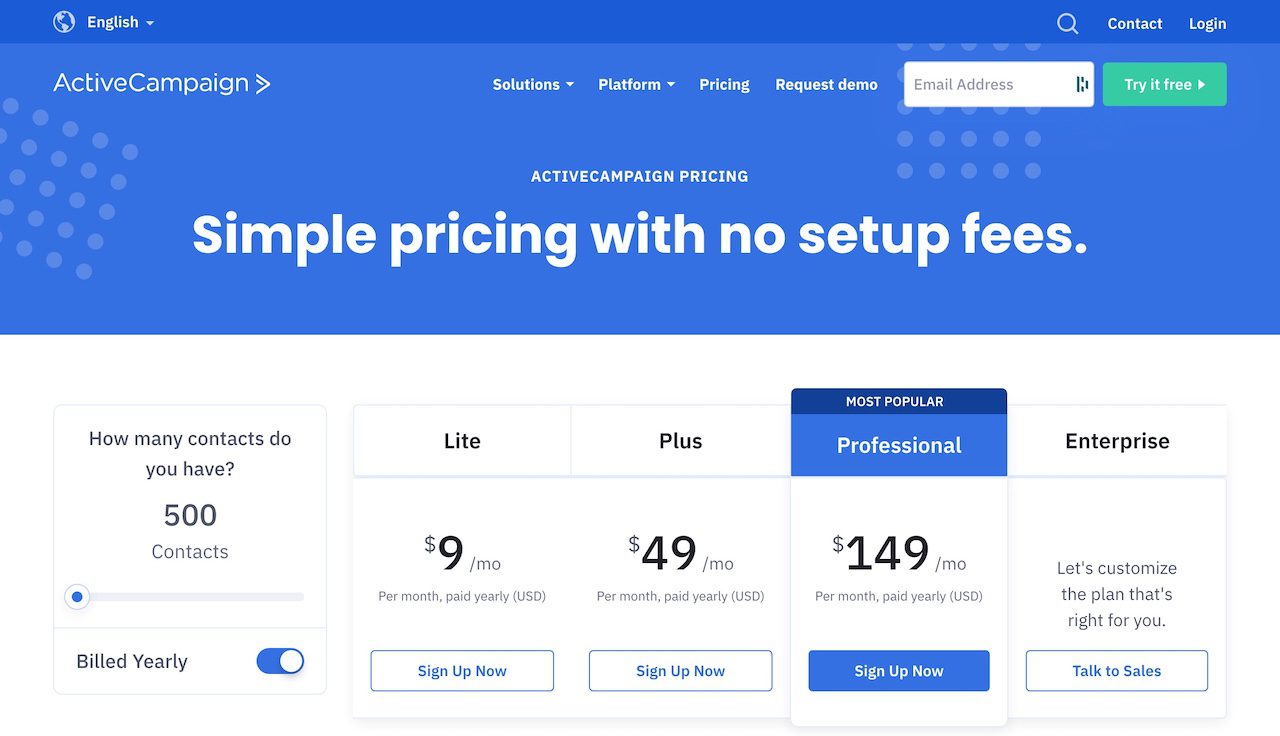


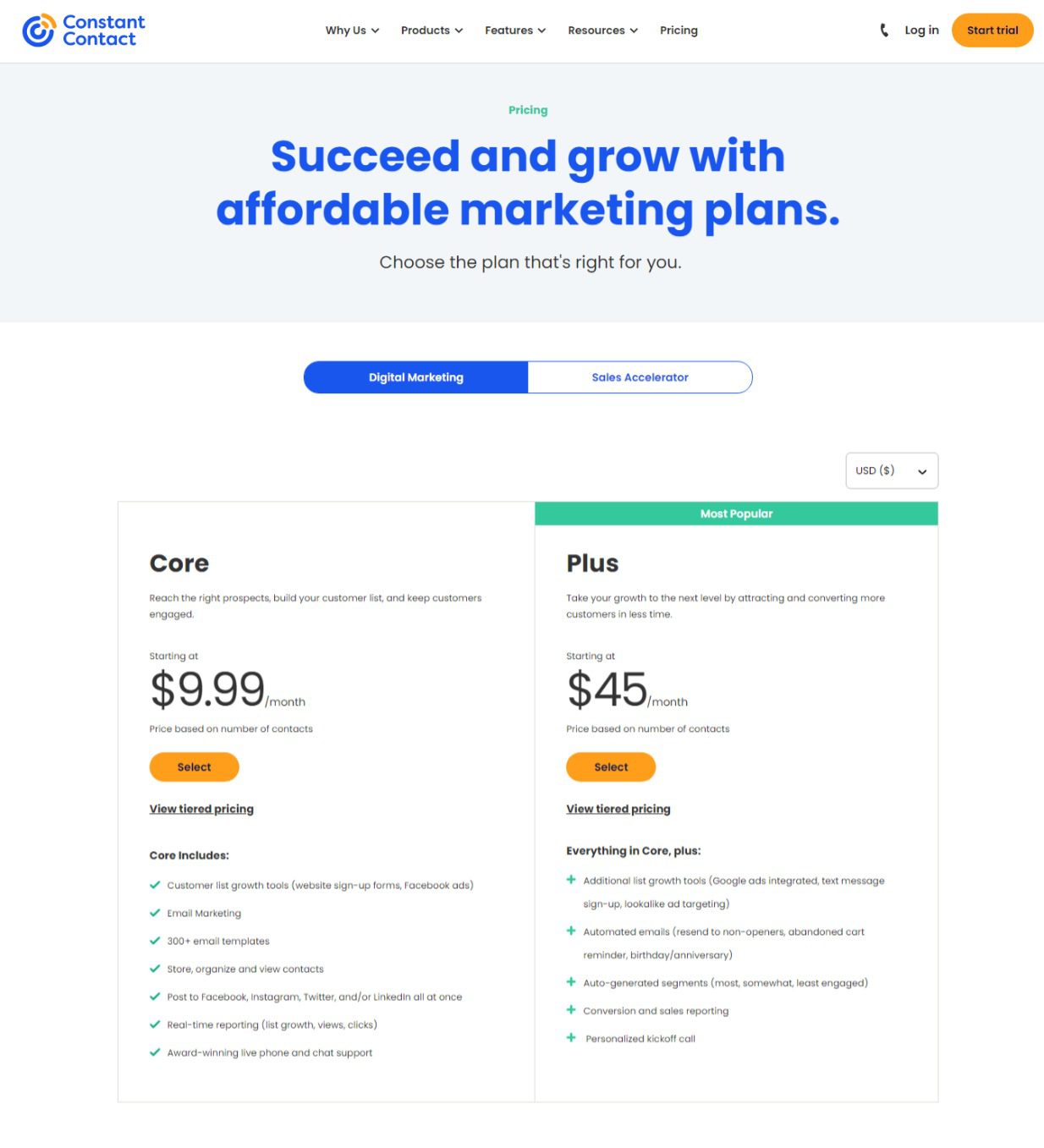


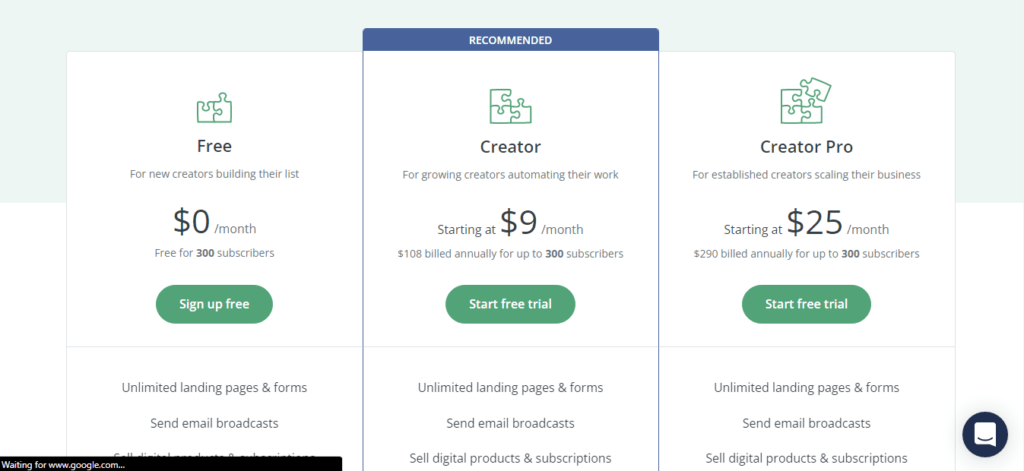


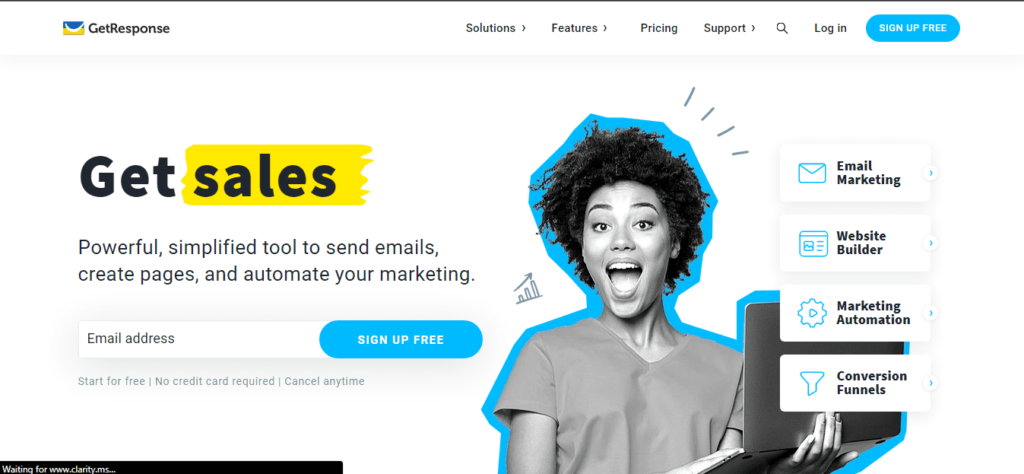
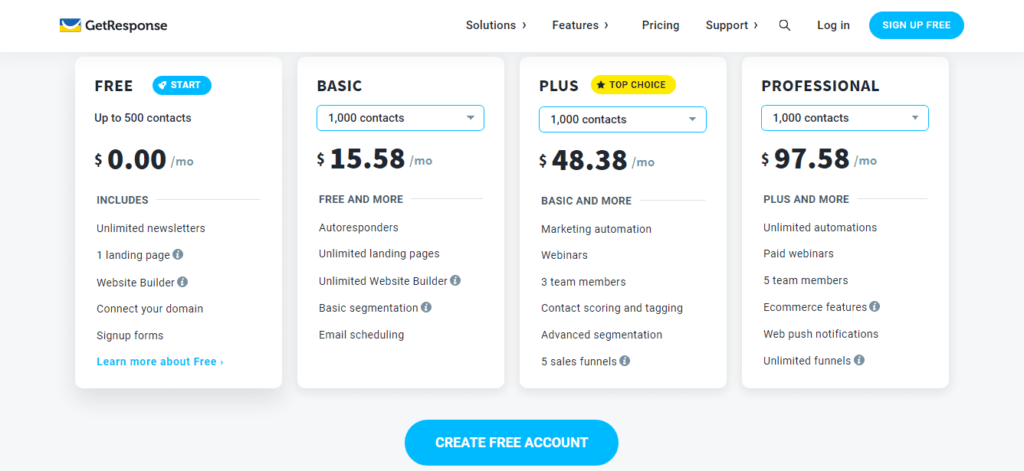

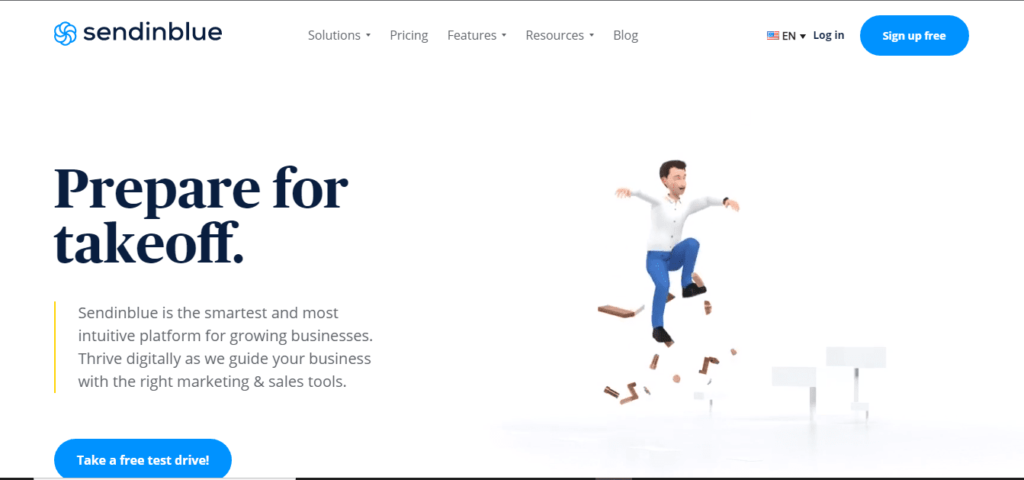





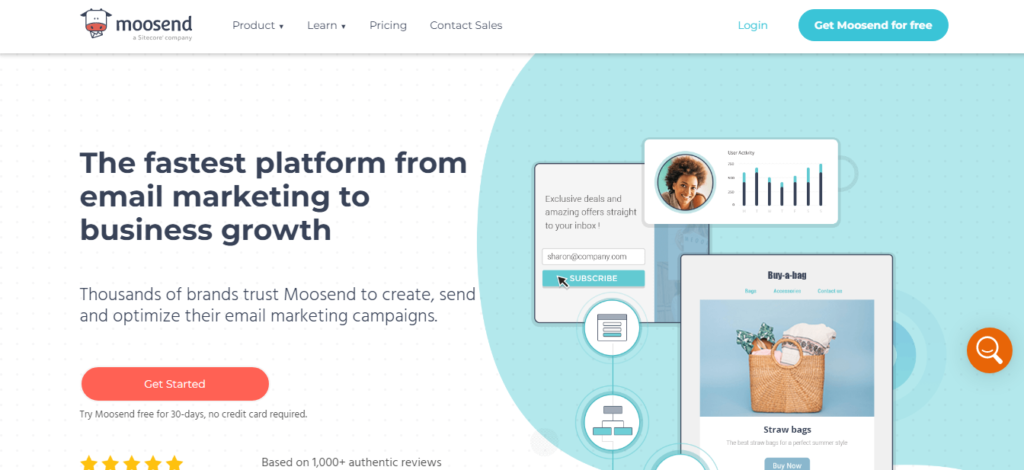
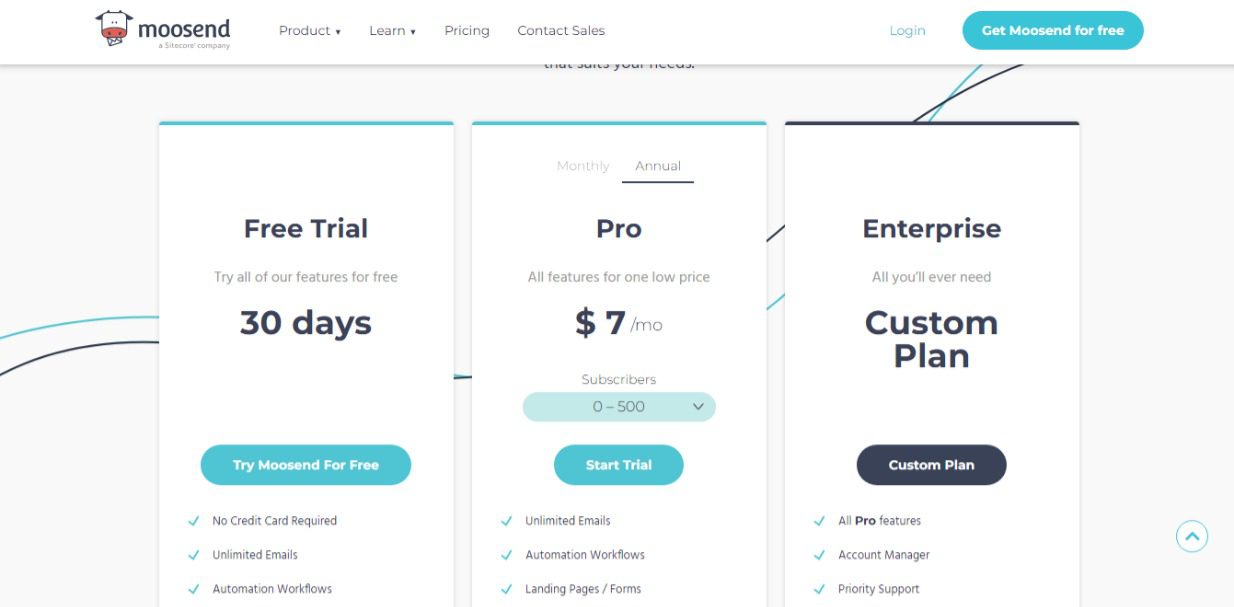

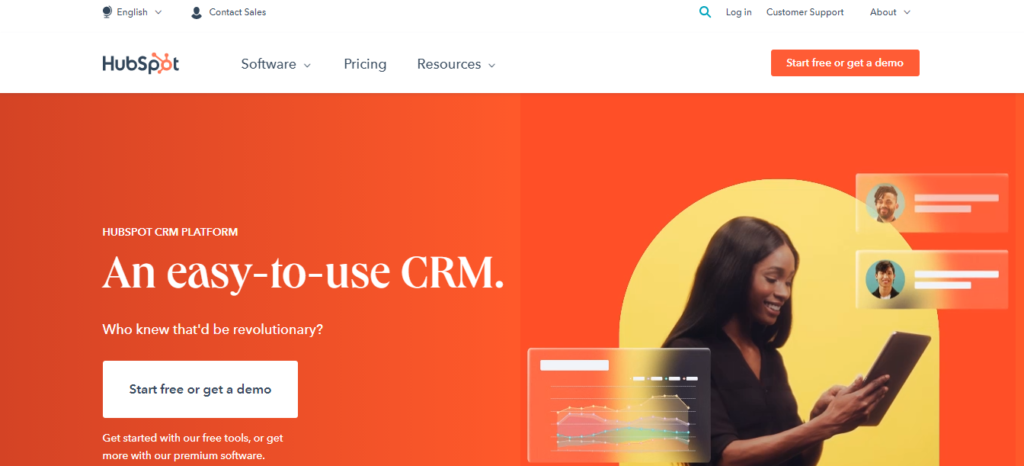




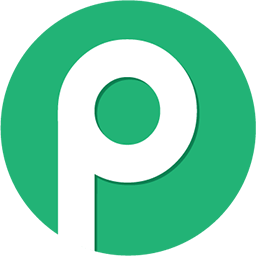

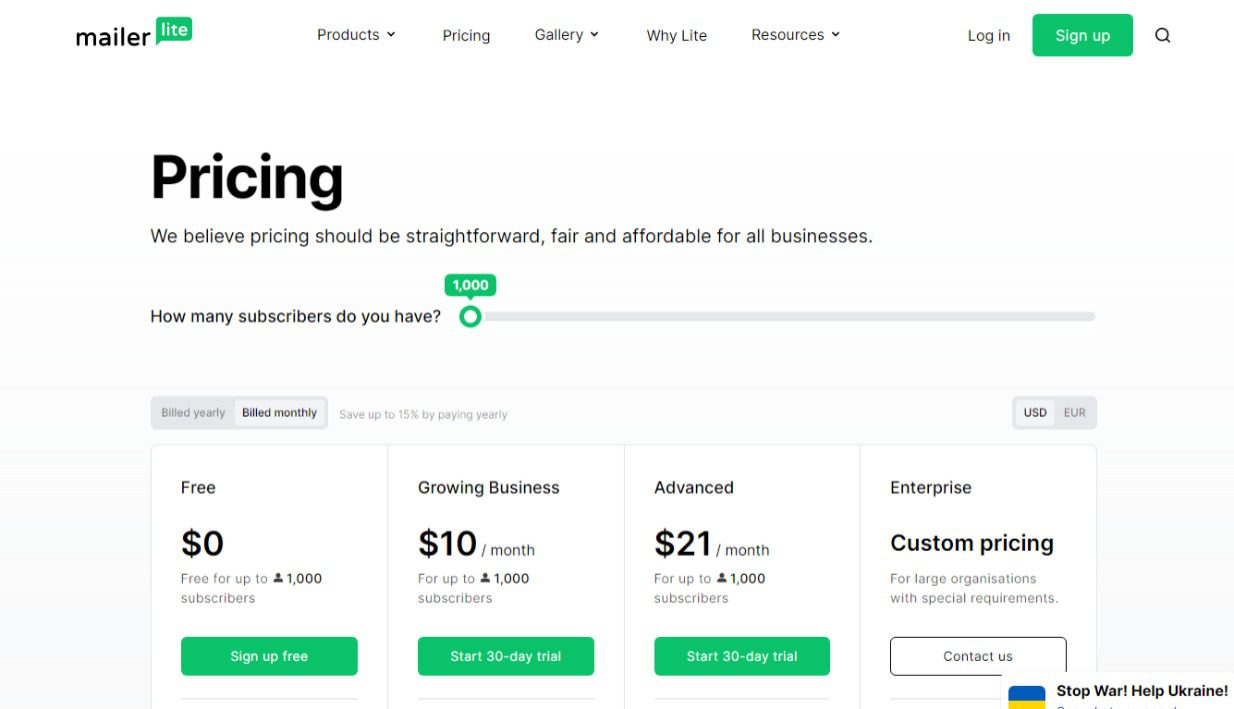
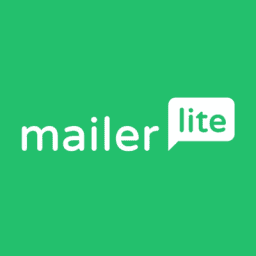
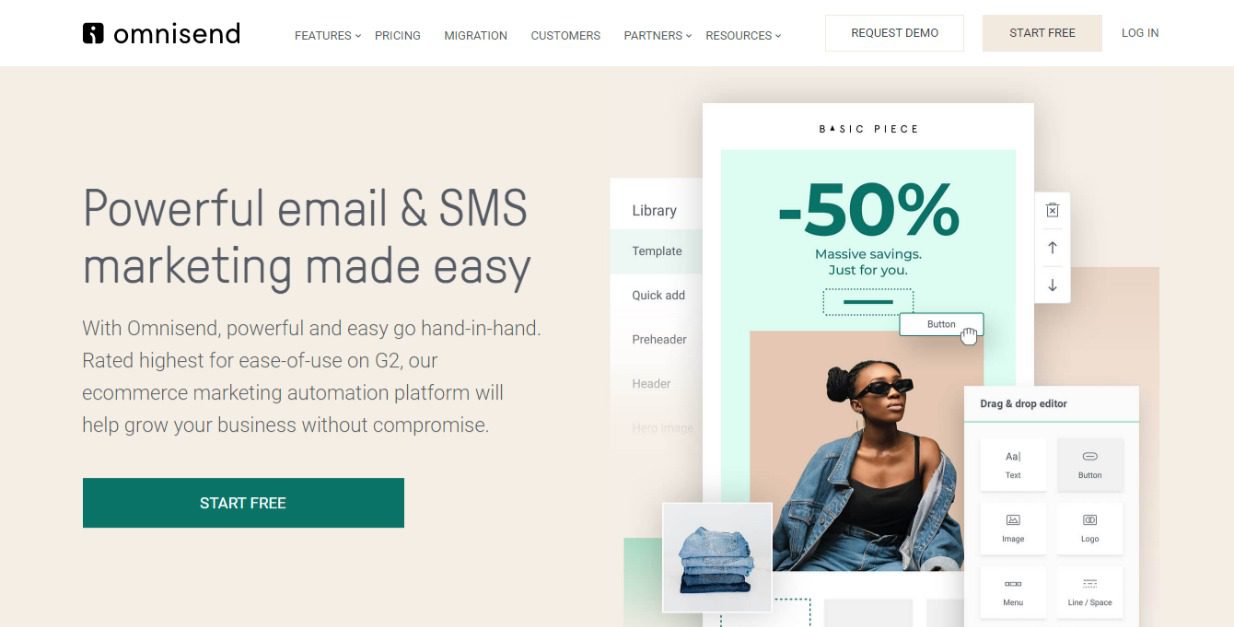
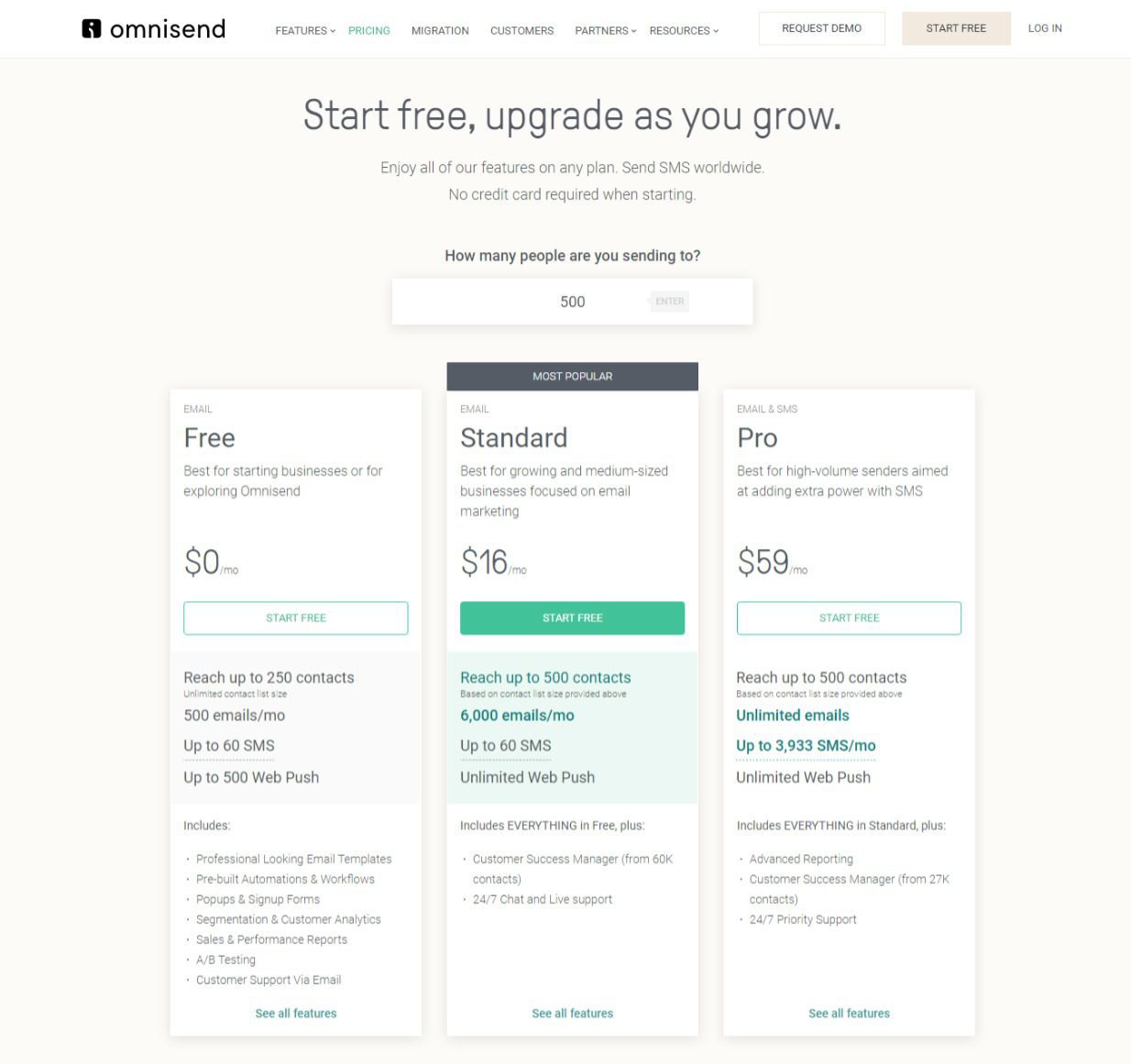


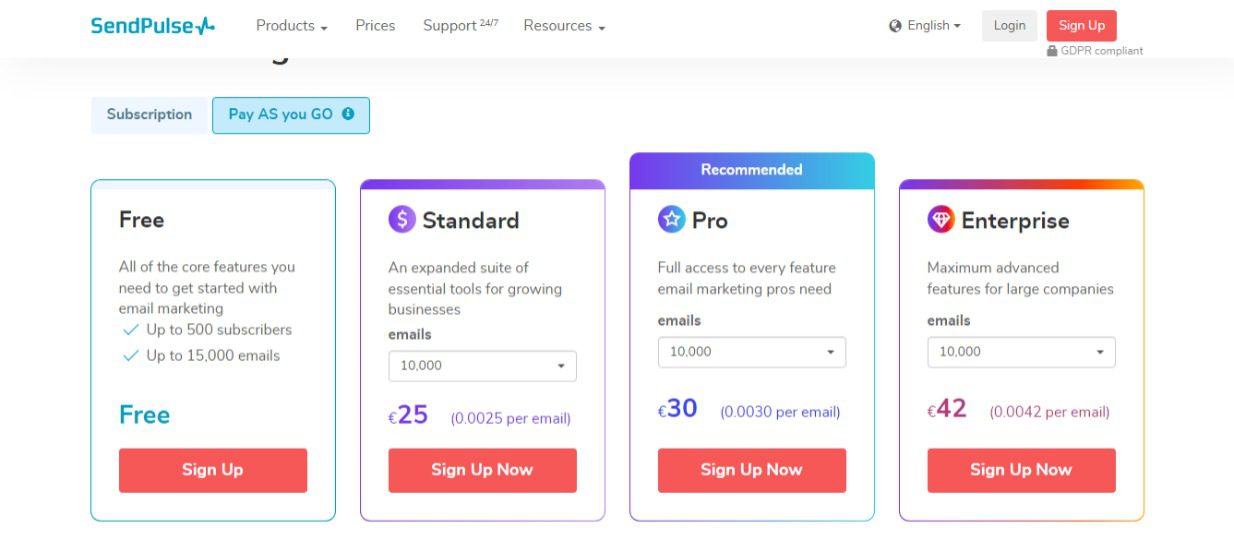

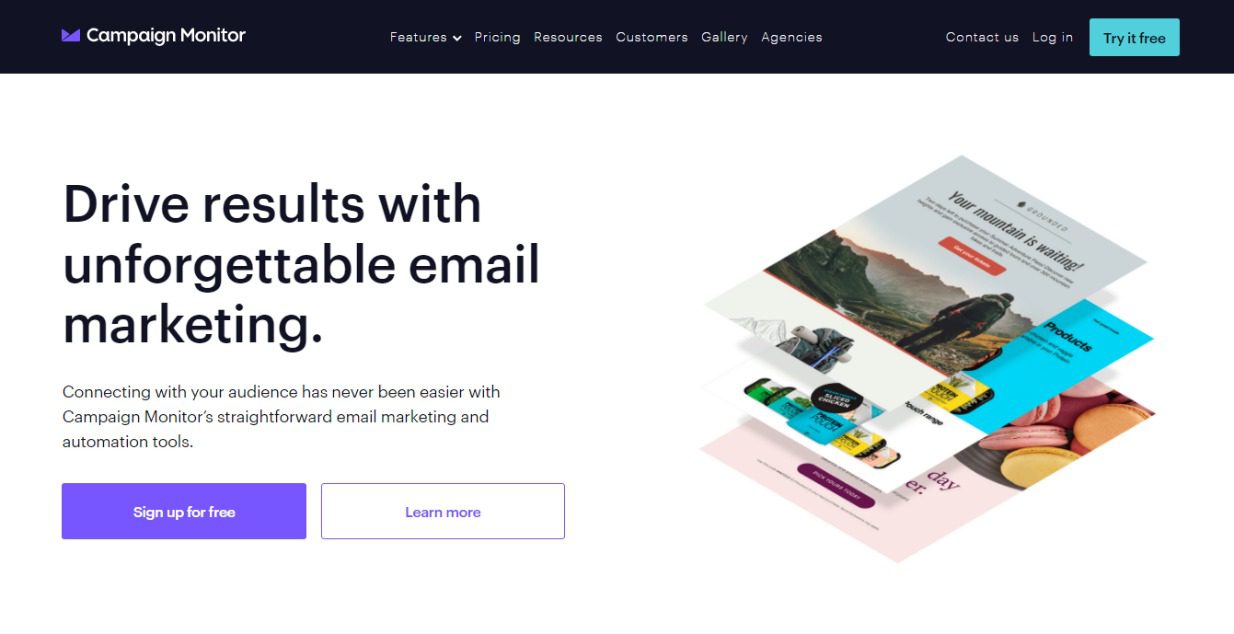


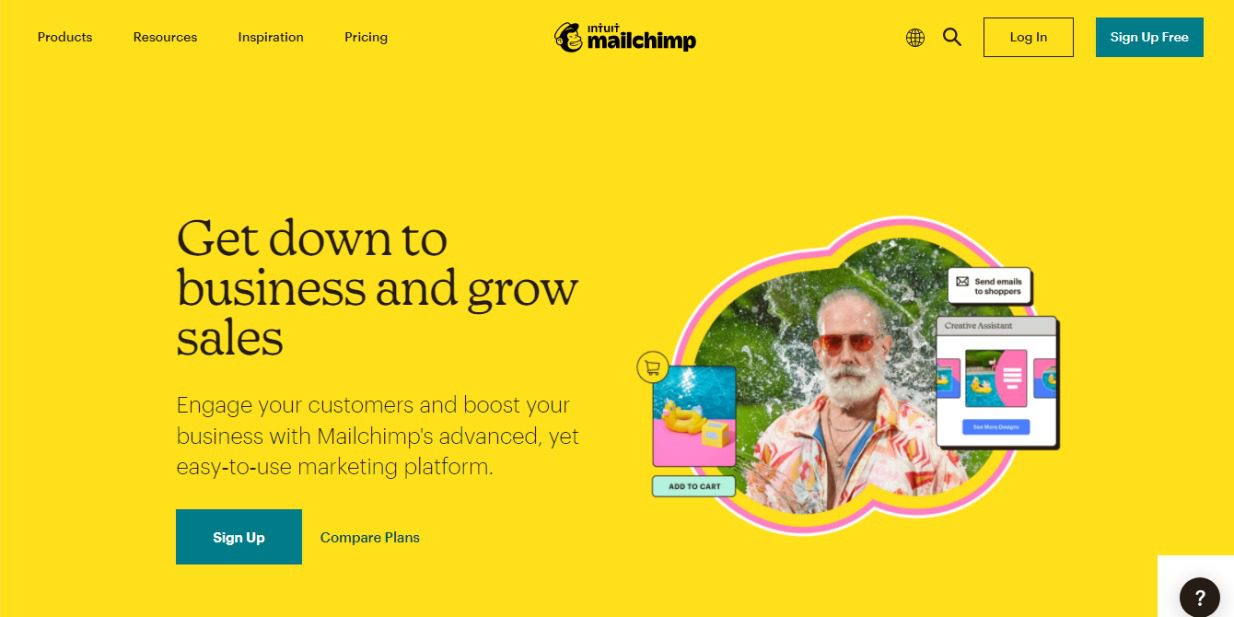
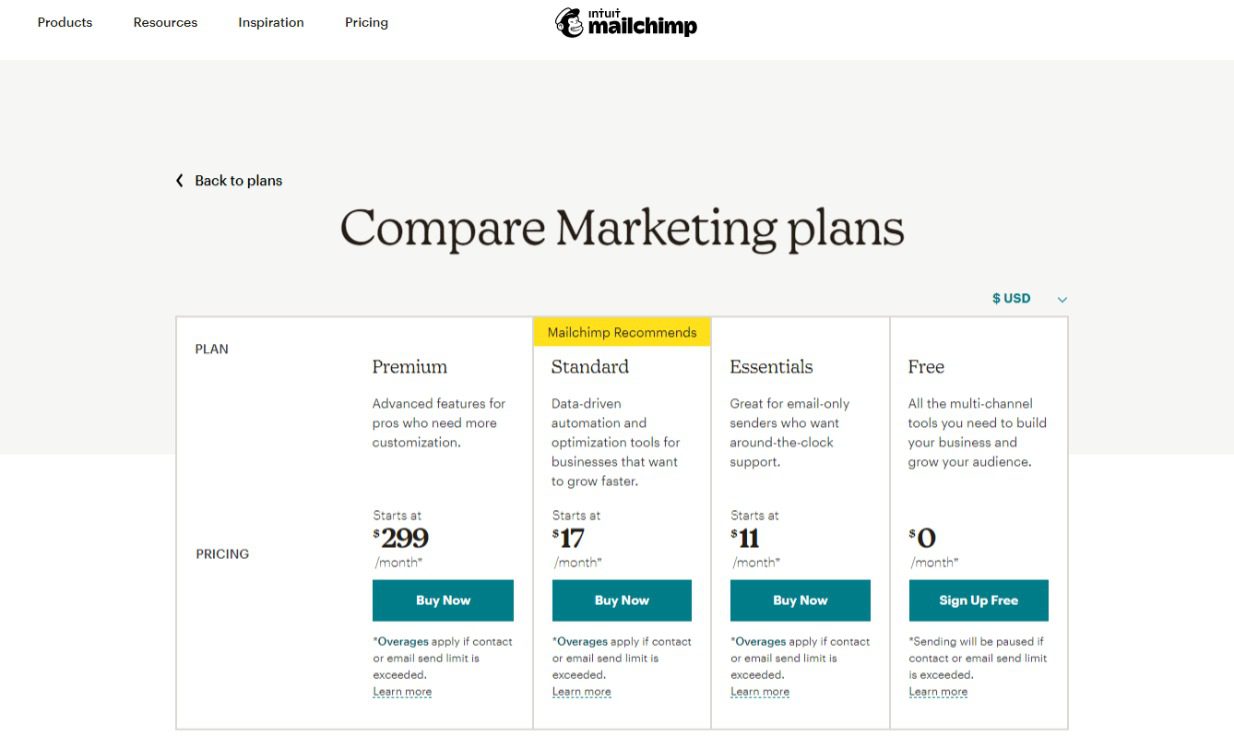


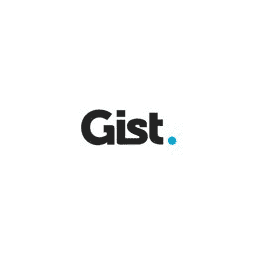
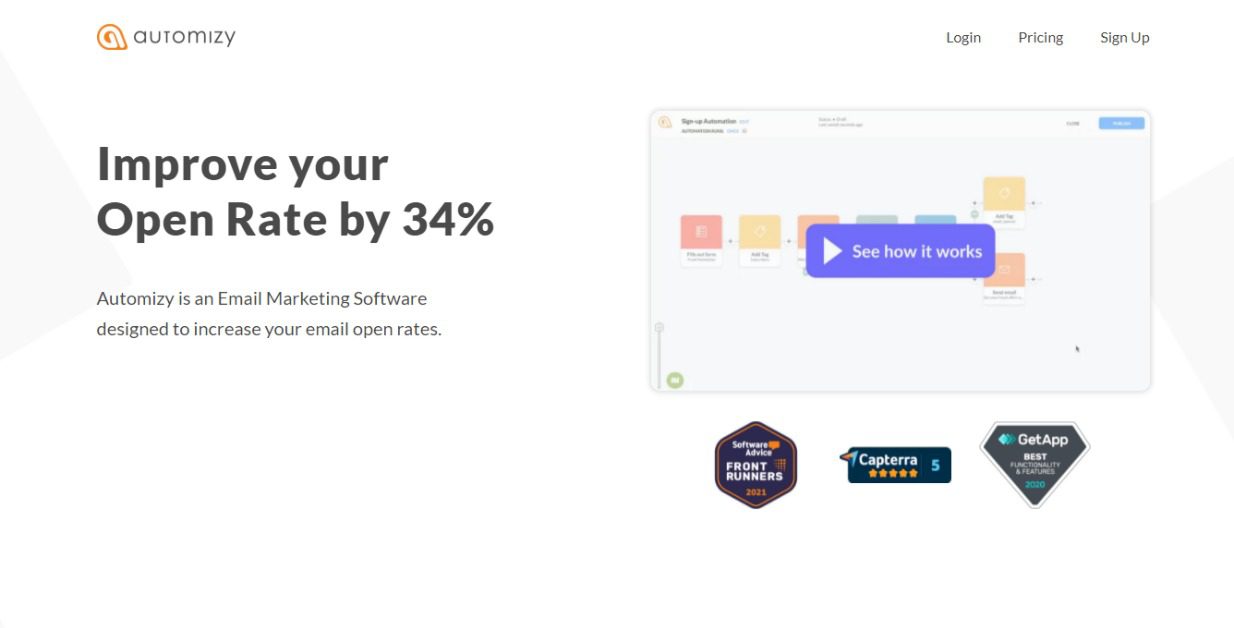

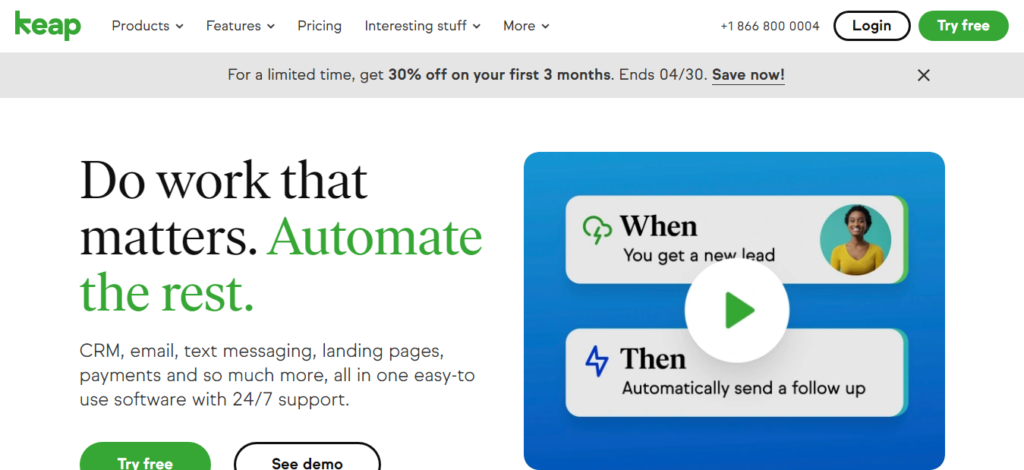

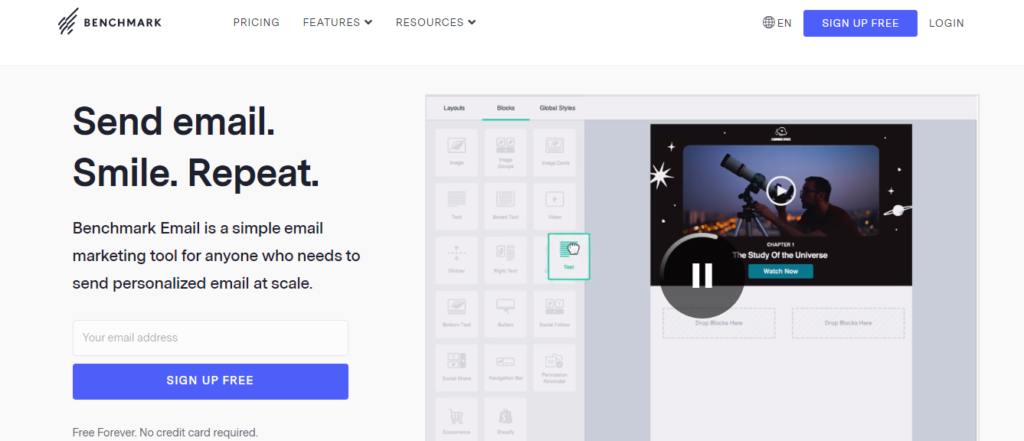
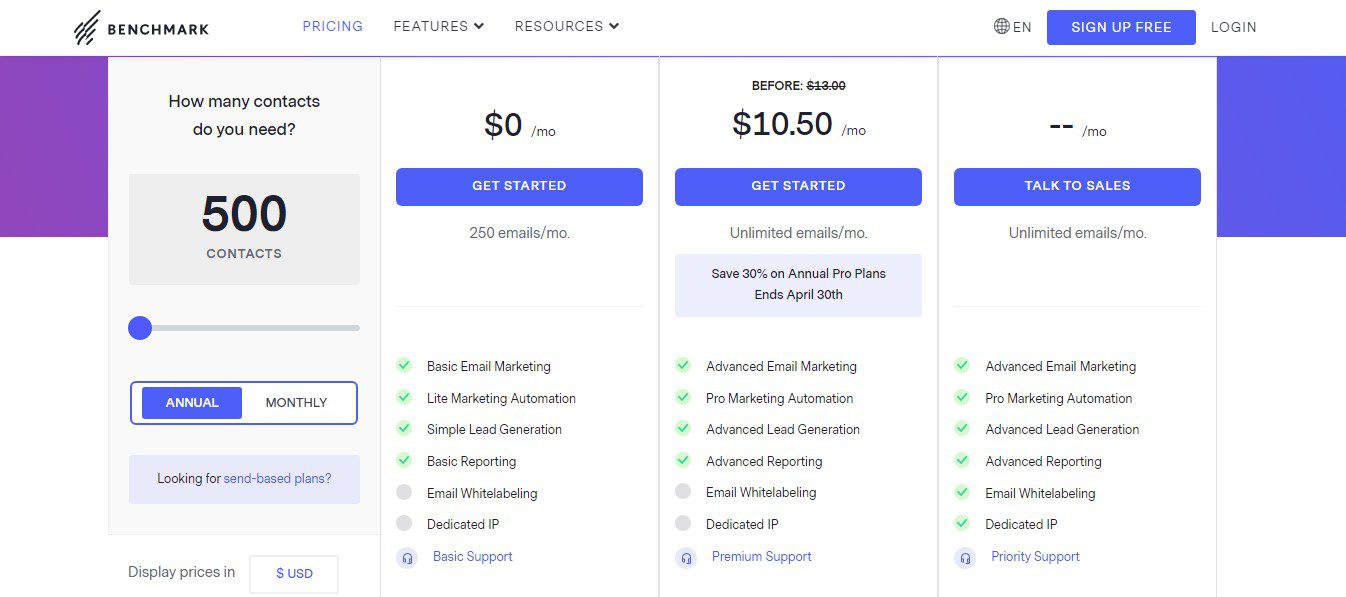

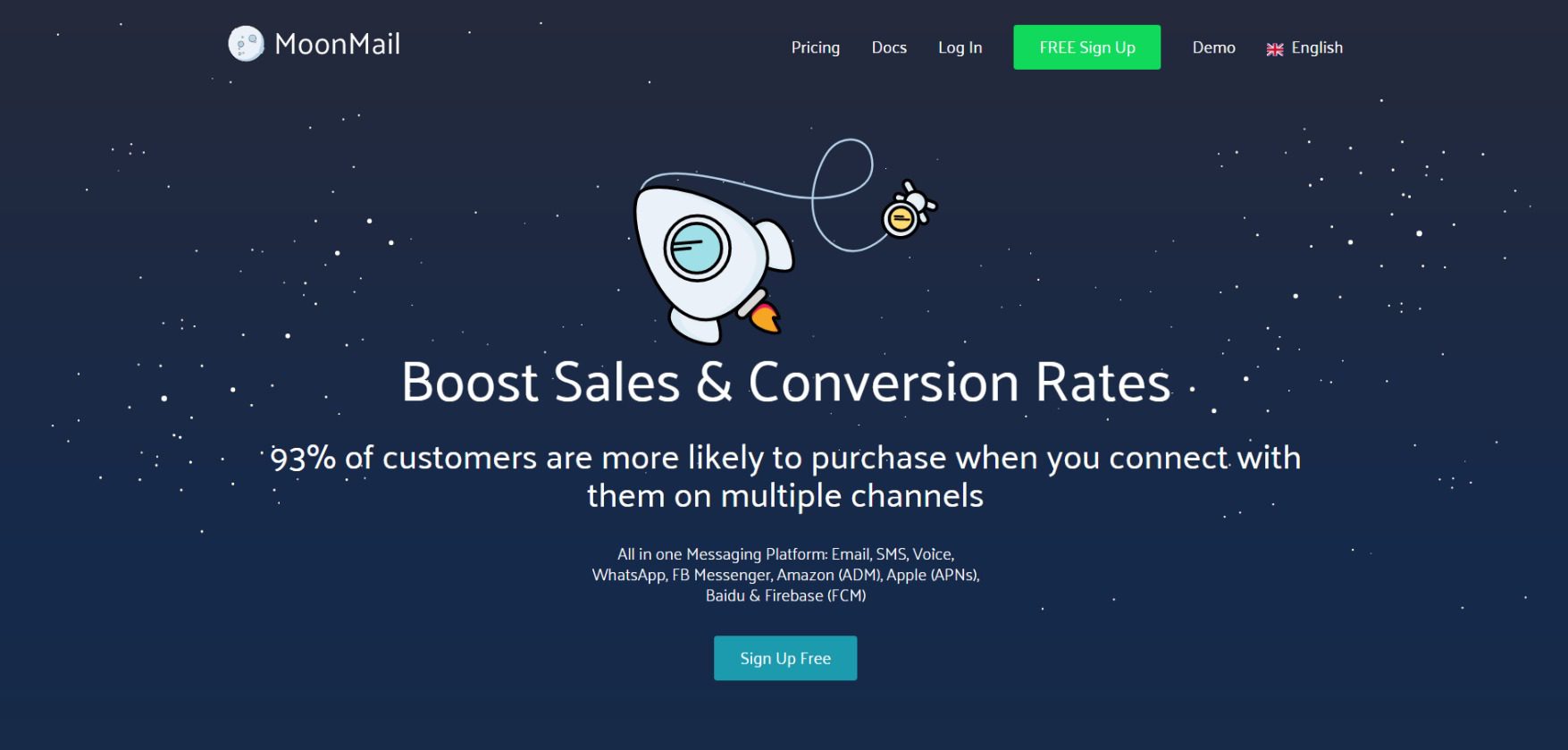
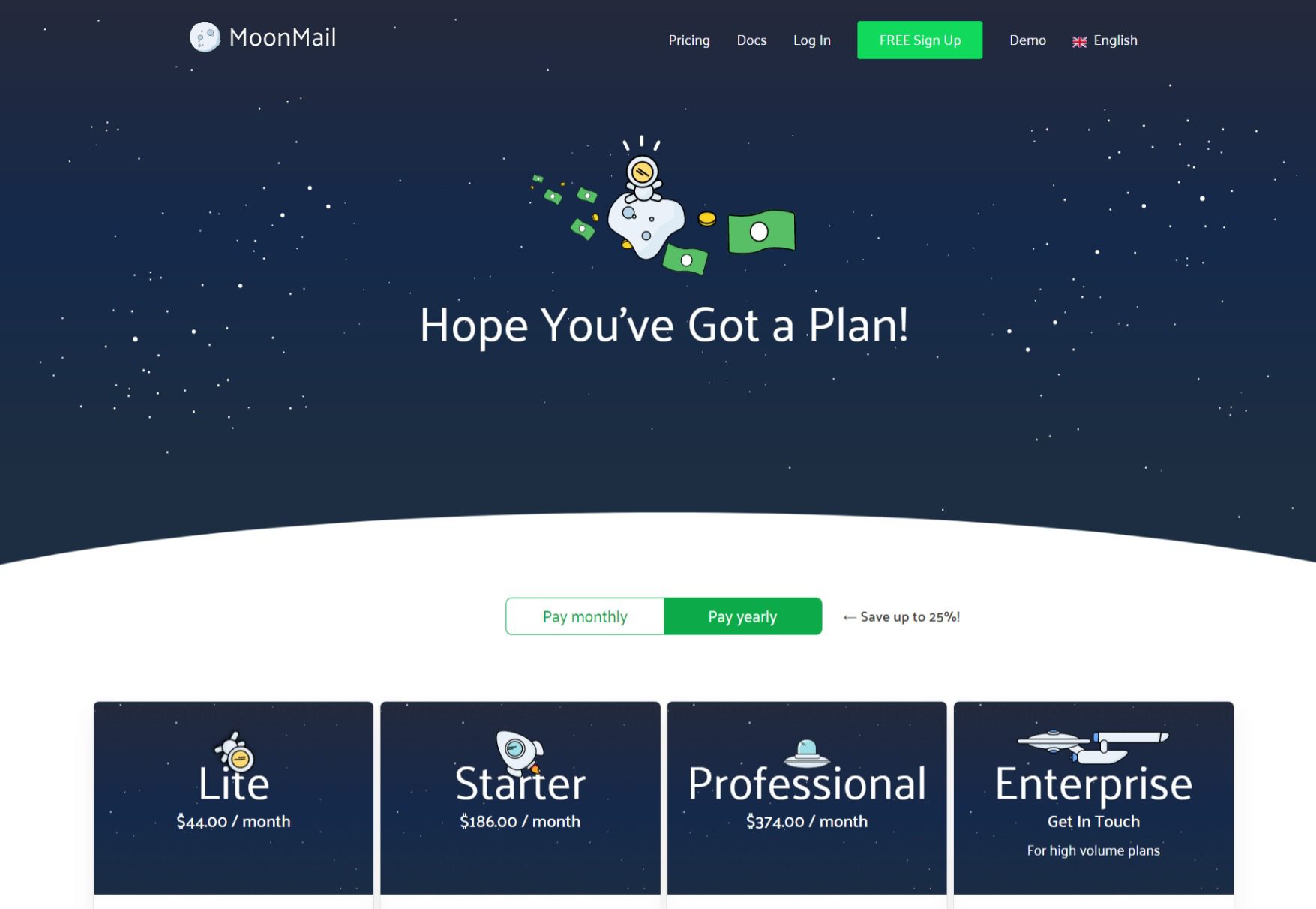

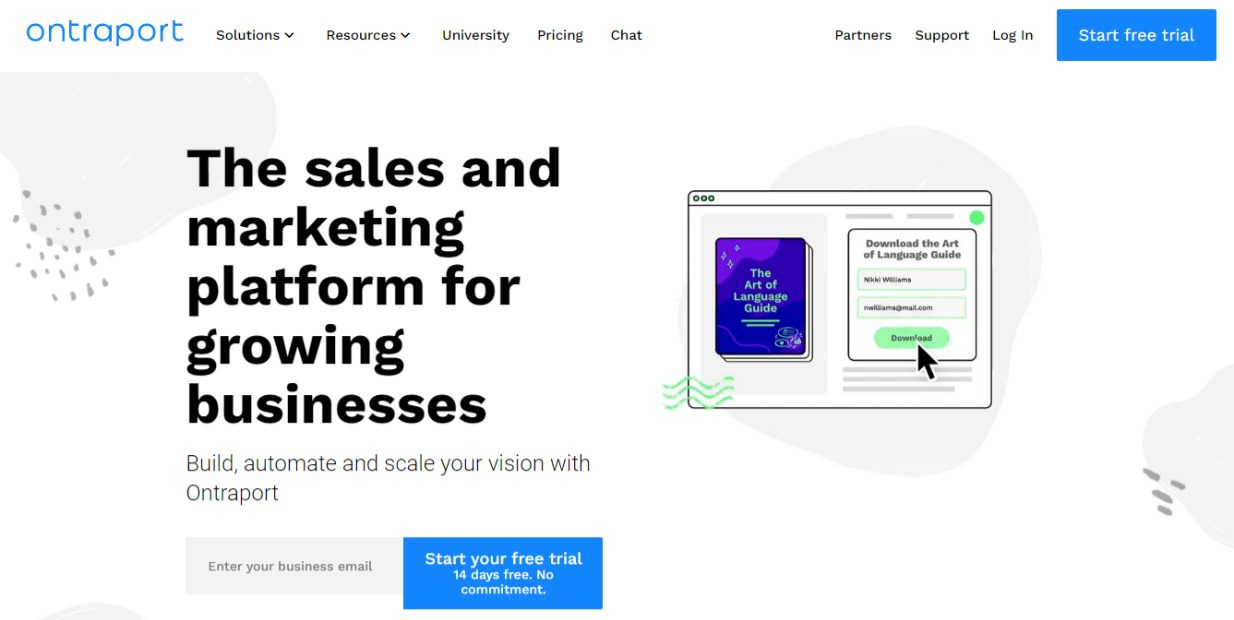




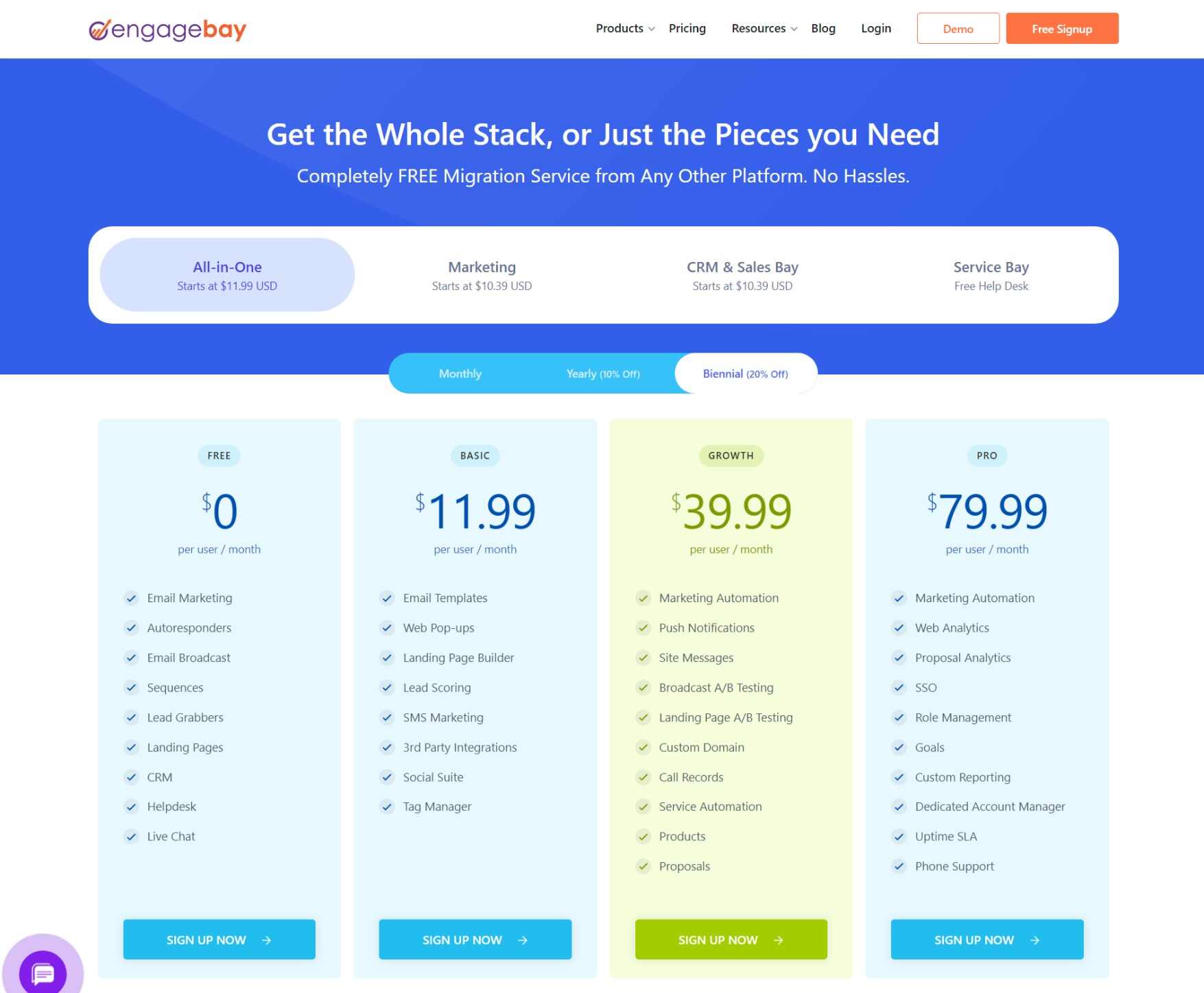
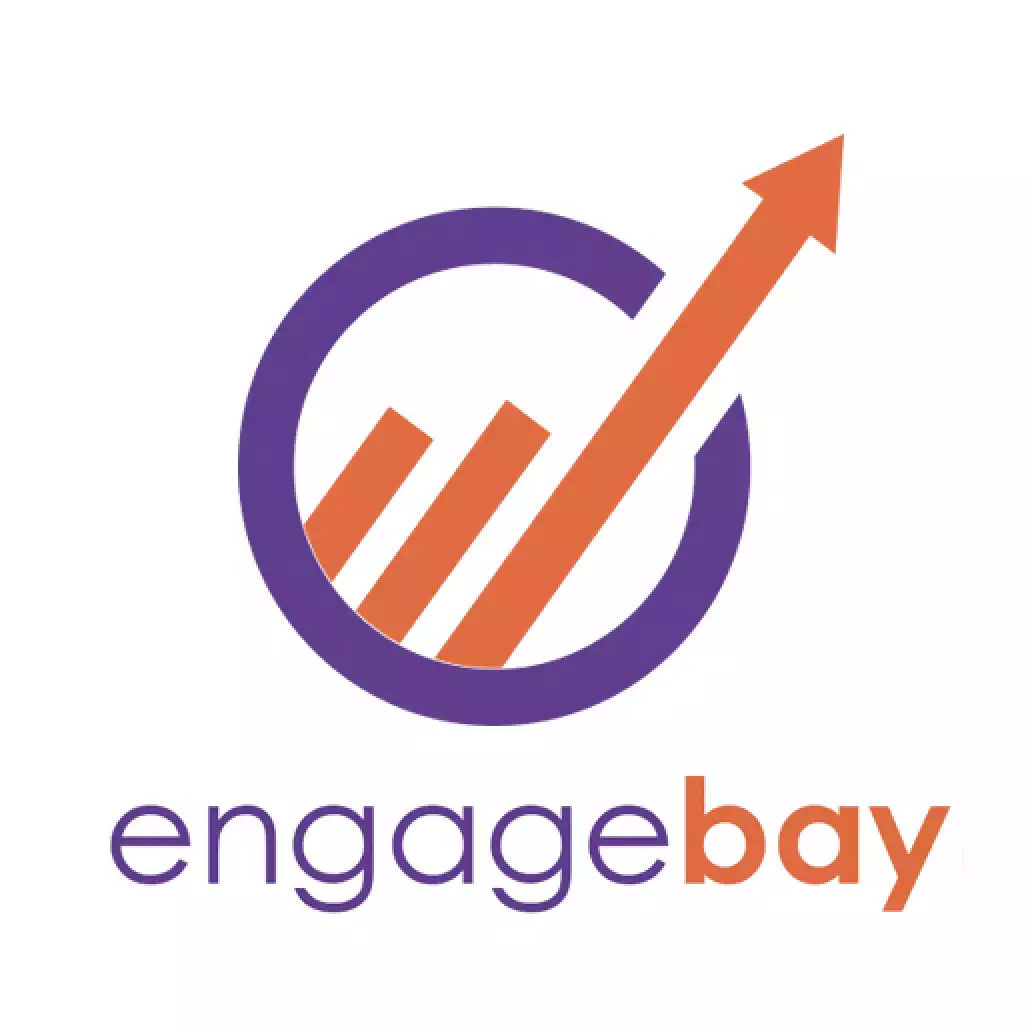
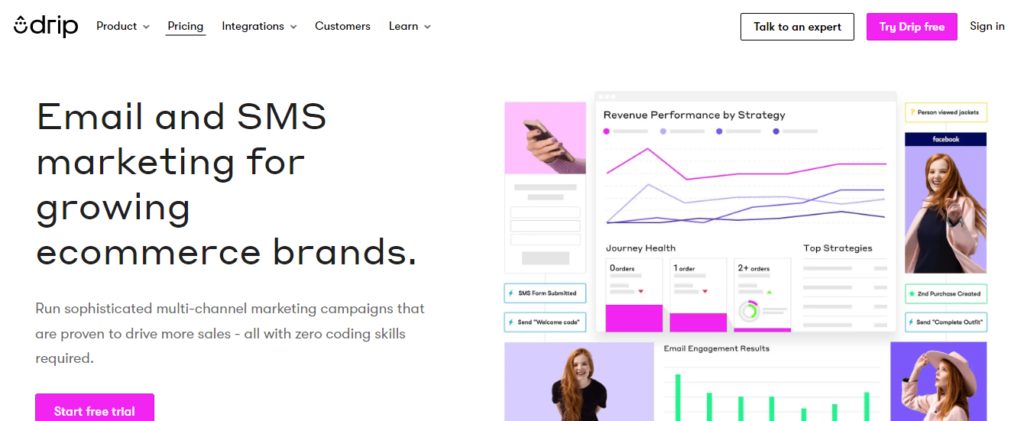
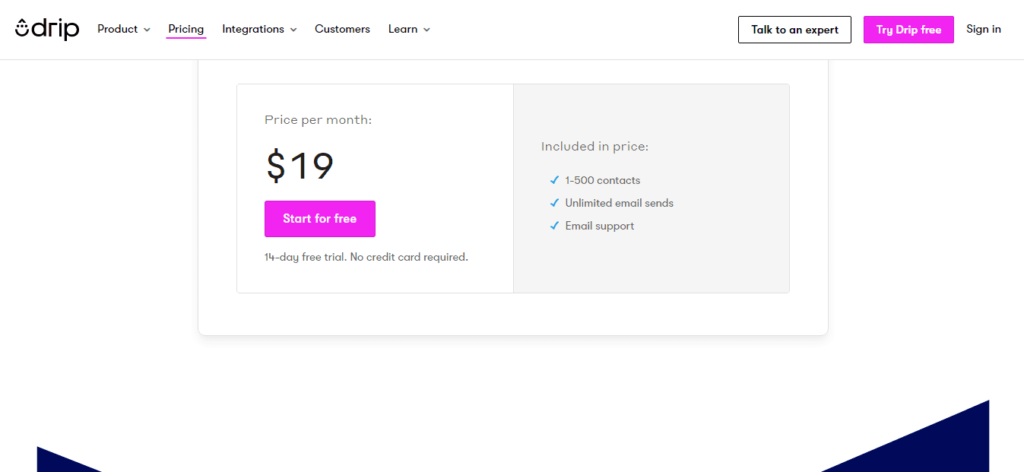

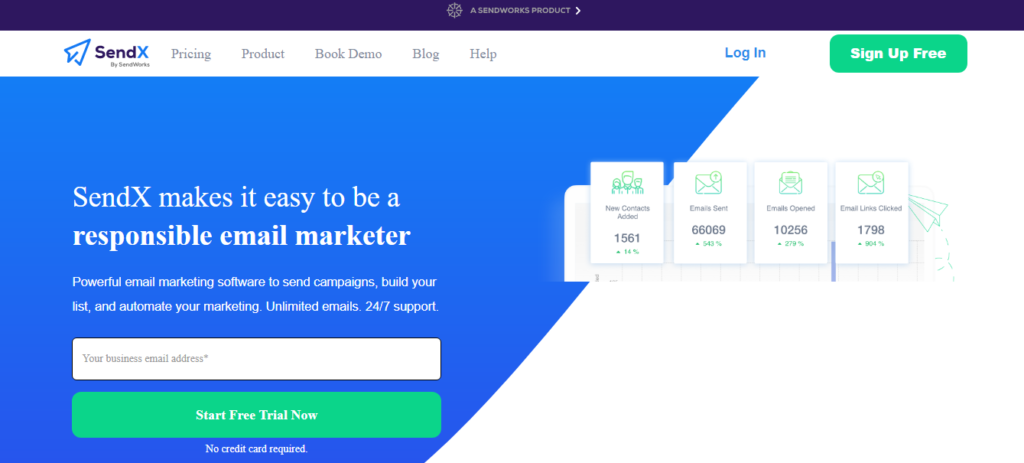

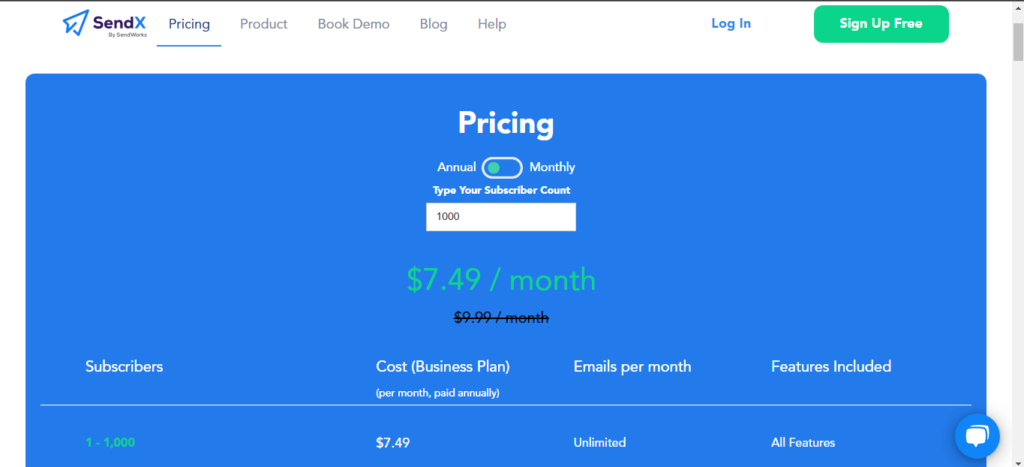
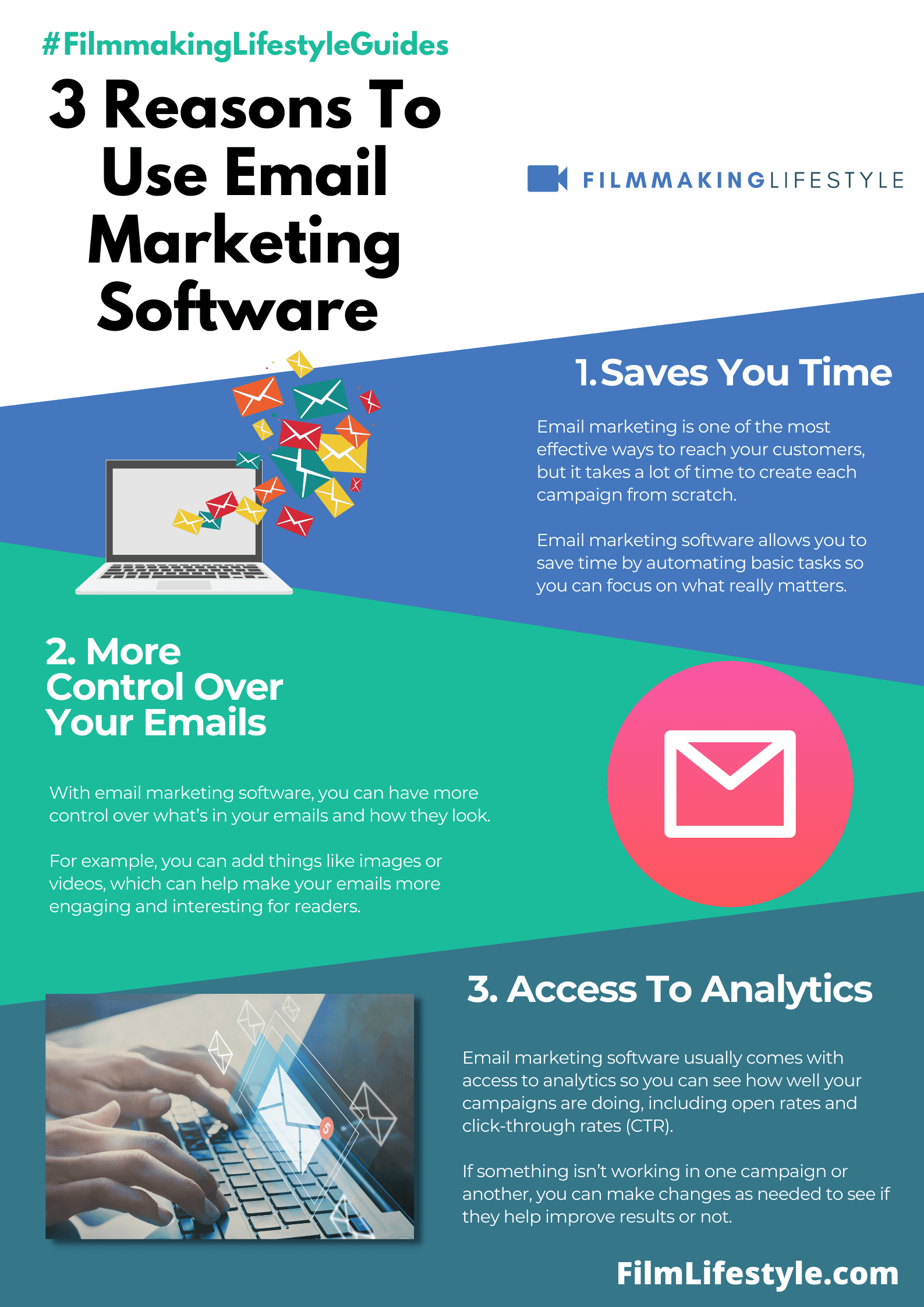

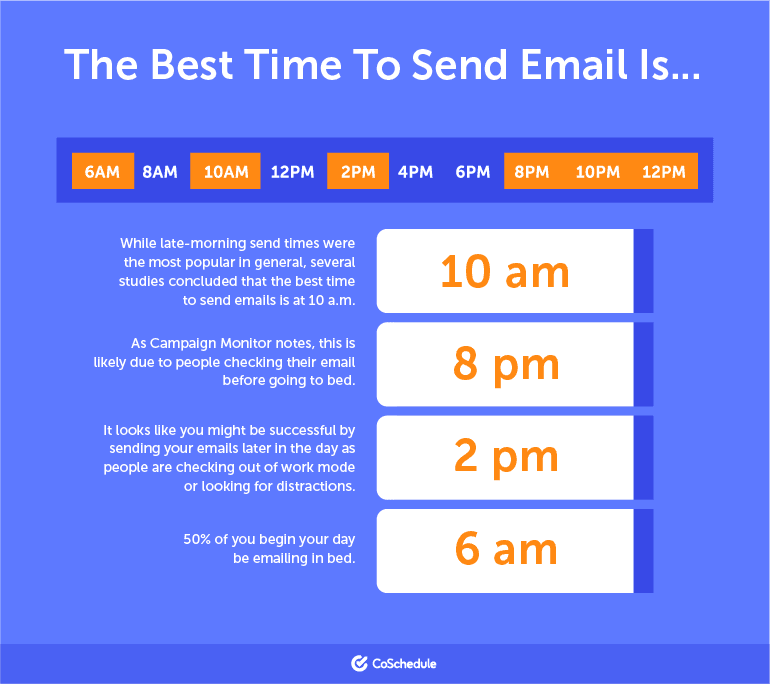

Hi, so much awesome information about email marketing software! Thank you.
Thanks, Sevval. We aim to please!
Awesome and very informative content but I would recommend you to review MailEngine once. My experience with this tool is satisfactory because here I can import and export files without any restrictions and can import any CSV file.
Also, its in-built spam filter and content spinner make sure to send spam-free and unique emails every time.
Thanks for the recommendation, Alma.
Active Campaign has been a great addition to my business toolkit. Thanks for your review – I’m glad to see I’ve made a good choice!
Great article, by the way, I’ll definitely check out your other stuff.
Thanks, Kennie.
Hey there, I really agree with this as I am currently employed as a digital media marketing manager for an email marketing service.
Good to get the vote of confidence, Kendall.
Email marketing is certainly a cost-effective way to reach customers and promote products and services.
Absolutely, Ronny.